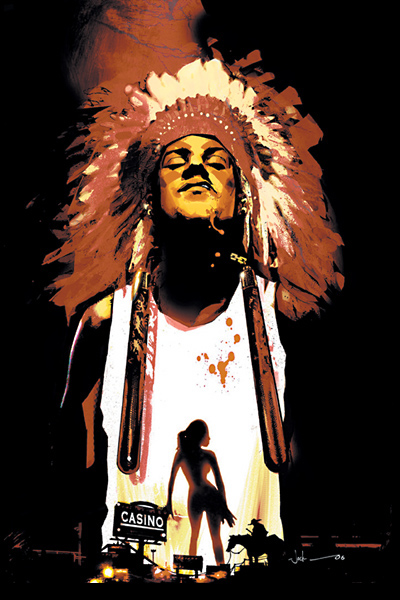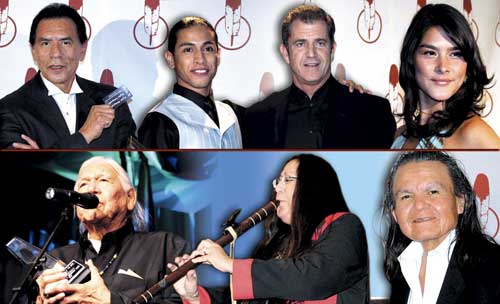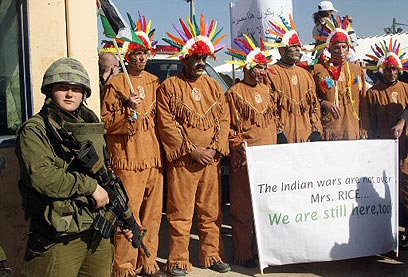
June 11, 2007
Lucy loves Indians
Playing "Indian," The Week in Reviewthis week ... the Bureau of Brady Braves spotted a quick instance of redface in a rerun of The Lucy-Desi Comedy Hour (1957-1960, CBS). the usual characters of lucy, ricky, ethel, and fred performed a skit set in the wild west. fred played a bartender; lucy played an "indian." with tomahawk in hand, she tackled fred behind the bar. they reappear in a few moments with fred's bald head now covered with lucy's hair, and lucy wears a bald skincap. so, playing "indian" means here: scalp or be scalped? of all american sitcom characters (and that includes thousands since the 1940s), lucille ball (the actress) may have played "indian" more than any other non-native character: in I Love Lucy episodes "the adagio" (as an "apache" dancin' 'round foolishly) and "the indian show" (as a hiawatha-wannabe) and in The Lucy Show (as the "wife" of an "indian chief" who gives her the state of utah for a wedding gift). 

Miss Navajo Nation tackles AIDS
Arizona: Navajos continue to battle AIDS, HIVIn recent months, Jocelyn Billy’s willingness to discuss topics such as sex, relationships and disease on the Navajo Nation has won praise from those working with HIV and AIDS patients.
While many Navajo officials shy away from those subjects, the 24-year-old Billy has used her unique and prominent status—as Miss Navajo Nation—to get the word out.
“For her to talk about HIV and STDs is phenomenal,” said Marco Arviso of the Navajo AIDS Network. 
While many Navajo officials shy away from those subjects, the 24-year-old Billy has used her unique and prominent status—as Miss Navajo Nation—to get the word out.
“For her to talk about HIV and STDs is phenomenal,” said Marco Arviso of the Navajo AIDS Network.

June 10, 2007
Isabel Allende's Daughter of Fortune
Daughter of Fortune: A Novel (Mass Market Paperback)Oprah Book Club® Selection, February 2000: Until Isabel Allende burst onto the scene with her 1985 debut, The House of the Spirits, Latin American fiction was, for the most part, a boys' club comprising such heavy hitters as Gabriel García Márquez, Jorge Luis Borges, and Mario Vargas Llosa. But the Chilean Allende shouldered her way in with her magical realist multi-generational tale of the Trueba family, followed it up with four more novels and a spate of nonfiction, and has remained in a place of honor ever since. Her sixth work of fiction, Daughter of Fortune, shares some characteristics with her earlier works: the canvas is wide, the characters are multi-generational and multi-ethnic, and the protagonist is an unconventional woman who overcomes enormous obstacles to make her way in the world. Yet one cannot accuse Allende of telling the same story twice; set in the mid-1800s, this novel follows the fortunes of Eliza Sommers, Chilean by birth but adopted by a British spinster, Rose Sommers, and her bachelor brother, Jeremy, after she is abandoned on their doorstep.
"You have English blood, like us," Miss Rose assured Eliza when she was old enough to understand. "Only someone from the British colony would have thought to leave you in a basket on the doorstep of the British Import and Export Company, Limited. I am sure they knew how good-hearted my brother Jeremy is, and felt sure he would take you in. In those days I was longing to have a child, and you fell into my arms, sent by God to be brought up in the solid principles of the Protestant faith and the English language."
The family servant, Mama Fresia, has a different point of view, however: "You, English? Don't get any ideas, child. You have Indian hair, like mine." And certainly Eliza's almost mystical ability to recall all the events of her life would seem to stem more from the Indian than the Protestant side.
As Eliza grows up, she becomes less tractable, and when she falls in love with Joachin Andieta, a clerk in Jeremy's firm, her adoptive family is horrified. They are even more so when a now-pregnant Eliza follows her lover to California where he has gone to make his fortune in the 1849 gold rush. Along the way Eliza meets Tao Chi'en, a Chinese doctor who saves her life and becomes her closest friend. What starts out as a search for a lost love becomes, over time, the discovery of self; and by the time Eliza finally catches up with the elusive Joachin, she is no longer sure she still wants what she once wished for. Allende peoples her novel with a host of colorful secondary characters. She even takes the narrative as far afield as China, providing an intimate portrait of Tao Chi'en's past before returning to 19th-century San Francisco, where he and Eliza eventually fetch up. Readers with a taste for the epic, the picaresque, and romance that is satisfyingly complex will find them all in Daughter of Fortune.
--Margaret Prior Comment: Just finished reading (actually, listening to) this book by the author of Zorro. It's similar to Zorro in scope, style, and quality, and you may recall how I raved about Zorro. It's another multicultural marvel and definitely worth your time.
I wouldn't call Daughter of Fortune a Native-themed book because the Native presence is muted. But Eliza's mother is Chilean, so she's part Native. More important, Eliza's upbringing is a tug-of-war between Rose, the Englishwoman who represents intellect, artificiality, and constraint, and Mama Fresia, the Indian woman who represents passion, genuineness, and freedom.
When Eliza escapes to America, the land of opportunity, her Indian side comes to the fore. Like the Californians around her, she learns to eschew antiquated concepts such as honor, propriety, and convention. In other words, she throws off the shackles of European civilization and becomes a "noble savage."
The only reason I rate Daughter of Fortune an 8.0 rather than an 8.5 like Zorro is because the ending was a little weak. As the book approached the finish, I was wondering how Allende was going to tie up the loose ends in the space left. Answer: She didn't. This book could easily warrant a sequel or at least another 3-4 chapters to wrap up the characters' stories.
P.S. Read here for more reviews of Daughter of Fortune.

The family servant, Mama Fresia, has a different point of view, however: "You, English? Don't get any ideas, child. You have Indian hair, like mine." And certainly Eliza's almost mystical ability to recall all the events of her life would seem to stem more from the Indian than the Protestant side.
As Eliza grows up, she becomes less tractable, and when she falls in love with Joachin Andieta, a clerk in Jeremy's firm, her adoptive family is horrified. They are even more so when a now-pregnant Eliza follows her lover to California where he has gone to make his fortune in the 1849 gold rush. Along the way Eliza meets Tao Chi'en, a Chinese doctor who saves her life and becomes her closest friend. What starts out as a search for a lost love becomes, over time, the discovery of self; and by the time Eliza finally catches up with the elusive Joachin, she is no longer sure she still wants what she once wished for. Allende peoples her novel with a host of colorful secondary characters. She even takes the narrative as far afield as China, providing an intimate portrait of Tao Chi'en's past before returning to 19th-century San Francisco, where he and Eliza eventually fetch up. Readers with a taste for the epic, the picaresque, and romance that is satisfyingly complex will find them all in Daughter of Fortune.
--Margaret Prior
I wouldn't call Daughter of Fortune a Native-themed book because the Native presence is muted. But Eliza's mother is Chilean, so she's part Native. More important, Eliza's upbringing is a tug-of-war between Rose, the Englishwoman who represents intellect, artificiality, and constraint, and Mama Fresia, the Indian woman who represents passion, genuineness, and freedom.
When Eliza escapes to America, the land of opportunity, her Indian side comes to the fore. Like the Californians around her, she learns to eschew antiquated concepts such as honor, propriety, and convention. In other words, she throws off the shackles of European civilization and becomes a "noble savage."
The only reason I rate Daughter of Fortune an 8.0 rather than an 8.5 like Zorro is because the ending was a little weak. As the book approached the finish, I was wondering how Allende was going to tie up the loose ends in the space left. Answer: She didn't. This book could easily warrant a sequel or at least another 3-4 chapters to wrap up the characters' stories.
P.S. Read here for more reviews of Daughter of Fortune.

Chickaloon comics
Chickaloon Village Store
C'eyiige' Hwnax"The magical house greets those who are polite and respectful with magnificent rewards, but misforture awaits those who dare disrespect that which does not belong to them.” 
Tsaani"This is a story about a brave young man who falls in love and must prove his worthiness. The lesson is to “Never give up, use your common sense.” 
Besiin"This is a story that tells how the Owl reacts to a child who won’t quit crying. This was an important tool for survival a long time ago. A hollering child might scare off animals while hunting, or a bear might come to investigate.” 
C'eyiige' Hwnax

Tsaani

Besiin

Chippewa graphic novel
The Illustrated History of the Chipppewas of NawashWhy you should buy a whole lot of Illustrated Histories ...
* They are very pretty ... 68 pages of hand-drawn and coloured panes throughout by award-winning Nawash artist Polly Keeshig-Tobias (she also designed the stained glass window in the Wiarton hospital and numerous posters)
* They are easy to read ... Written in comic-book style, often using original quotes from the archives.
* They are thoroughly researched and referenced ... 18 pages of references to original documents, 5 coloured maps, all the relevant treaties reprinted in full, and a page of Ojibway words used in the text.
* They are educational ... Each of the 11 episodes tells a story that is familiar to all Anishnabe and which should be familiar to all Canadians. Together the episodes show how First Nations lost their lands and resources and how, now, they are re-gaining them.
What other authors and historians have said ...
"Your Illustrated History tells the Native side of a sadly familiar story without misrepresenting or avoiding the salient facts." --Ronald Wright, author of Stolen Continents
"Polly has succeeded where historians, sociologists, ethnographers, anthropologists have failed. [This book] deserves to be in classrooms. I'll wager that it will generate greater appeal than conventional histories." --Dr. Basil Johnston, author of School Days, The Manitous and many other books.
"What a wonderfully accessible way to tell a story!" --Daniel David Moses, Native poet, author and playwright. 
* They are very pretty ... 68 pages of hand-drawn and coloured panes throughout by award-winning Nawash artist Polly Keeshig-Tobias (she also designed the stained glass window in the Wiarton hospital and numerous posters)
* They are easy to read ... Written in comic-book style, often using original quotes from the archives.
* They are thoroughly researched and referenced ... 18 pages of references to original documents, 5 coloured maps, all the relevant treaties reprinted in full, and a page of Ojibway words used in the text.
* They are educational ... Each of the 11 episodes tells a story that is familiar to all Anishnabe and which should be familiar to all Canadians. Together the episodes show how First Nations lost their lands and resources and how, now, they are re-gaining them.
What other authors and historians have said ...
"Your Illustrated History tells the Native side of a sadly familiar story without misrepresenting or avoiding the salient facts." --Ronald Wright, author of Stolen Continents
"Polly has succeeded where historians, sociologists, ethnographers, anthropologists have failed. [This book] deserves to be in classrooms. I'll wager that it will generate greater appeal than conventional histories." --Dr. Basil Johnston, author of School Days, The Manitous and many other books.
"What a wonderfully accessible way to tell a story!" --Daniel David Moses, Native poet, author and playwright.

Google aids Indians
Google to harness satellite power for an Amazon tribe
When the Brazilian government failed to defend his tribe against loggers and miners, the leader found a high-tech allyAlmir says loggers and miners have already killed 11 Surui chiefs--Surui is both the common surname and name of the tribe--who tried to prevent them from entering their lands over the past five years, and he says Brazilian government officials have failed to stop the violence. So the 32-year-old indigenous leader, a stocky man who often dons a headdress made from feathers of Amazonian birds, opted for another route--an appeal to Google.
During his visit to the Bay Area late last month, Almir, the first Surui to graduate from college, asked the folks at Google Earth for high-quality satellite imagery that would allow the tribe to monitor loggers and miners, who have no legal right to operate on the tribe's 600,000-acre reserve about 1,600 miles northwest of Rio de Janeiro.
His plea fell on receptive ears with company officials in Mountain View, who are now at work on a plan to let the Surui use Google's technology to raise awareness of their plight by working with satellite providers to vastly improve image resolution. 
When the Brazilian government failed to defend his tribe against loggers and miners, the leader found a high-tech ally
During his visit to the Bay Area late last month, Almir, the first Surui to graduate from college, asked the folks at Google Earth for high-quality satellite imagery that would allow the tribe to monitor loggers and miners, who have no legal right to operate on the tribe's 600,000-acre reserve about 1,600 miles northwest of Rio de Janeiro.
His plea fell on receptive ears with company officials in Mountain View, who are now at work on a plan to let the Surui use Google's technology to raise awareness of their plight by working with satellite providers to vastly improve image resolution.

Blame comet, not Indians
New Theory on Old Debate: Comet Killed the MammothThere are intriguing new clues in the mystery of how the woolly mammoth met its demise in North America more than 10,000 years ago.
For decades, scientists have debated whether the giant, elephant-like beasts were driven to extinction by the arrival of overzealous human hunters or by global warming at the end of the Pleistocene era, the last great Ice Age. Some say it was a combination of the two.
Recently, a group of more than two dozen scientists offered a new explanation. They have found signs that a comet--or multiple fragments of one--exploded over Canada about 12,900 years ago with the force equivalent to millions of nuclear weapons. That unleashed, they said, a tremendous shock wave that destroyed much of what was in its path and ignited wildfires across North America. Comment: This is relevant because people have used the megafauna extinction to claim proto-Indians were greedy and rapacious rather than frugal and ecologically minded. In other words, it's the first evidence, chronologically speaking, that Natives were savage and barbaric.

For decades, scientists have debated whether the giant, elephant-like beasts were driven to extinction by the arrival of overzealous human hunters or by global warming at the end of the Pleistocene era, the last great Ice Age. Some say it was a combination of the two.
Recently, a group of more than two dozen scientists offered a new explanation. They have found signs that a comet--or multiple fragments of one--exploded over Canada about 12,900 years ago with the force equivalent to millions of nuclear weapons. That unleashed, they said, a tremendous shock wave that destroyed much of what was in its path and ignited wildfires across North America.

June 09, 2007
Sherman Alexie blogs
flight book tour blogDuring the reading, I cracked wise about the Nez Perce Indians (It's an old tribal tradition to playfully (and sometimes not so playfully) mock other tribes.) I told the story of the time back in college when a few of us Indians grabbed the list of our fellow students who'd self-identified as Indians and went a-calling on their dorm rooms and apartments.
We took along a few of the grungiest Nez Perce dudes we could find to put a scare into the box-checker Indians (as in 'Hey, if I check this book that says I'm Indian, maybe I'll get scholarship money'). And then I remarked that grungy and Nez Perce might be redundant (eliciting laughs and groans from the crowd).
Then a guy from the back row shouted out something unintelligible. "What?" I asked. He shouted that same unintelligible something. "What?" I asked again. And he said, in a normal speaking voice, that "Horace Axtell is probably one of the greatest tribal elders ever. And he's Nez Perce and he's not grungy."
I started laughing and said, "Wow, did they remove your sense of humor at birth? Or did you lose it in an accident?" He mumbled something back and I said, "Oh, no, you're one of them serious people. You're one of those folks who think Indians are serious. You revere us, don't you? Oh, my, that just shows me that you don't know any Indians. You know who'd be laughing hardest right now? Horace! I know Horace. Have known him for years. He's a hilarious dude. If he was here, he'd probably be telling dirty jokes backstage." 
We took along a few of the grungiest Nez Perce dudes we could find to put a scare into the box-checker Indians (as in 'Hey, if I check this book that says I'm Indian, maybe I'll get scholarship money'). And then I remarked that grungy and Nez Perce might be redundant (eliciting laughs and groans from the crowd).
Then a guy from the back row shouted out something unintelligible. "What?" I asked. He shouted that same unintelligible something. "What?" I asked again. And he said, in a normal speaking voice, that "Horace Axtell is probably one of the greatest tribal elders ever. And he's Nez Perce and he's not grungy."
I started laughing and said, "Wow, did they remove your sense of humor at birth? Or did you lose it in an accident?" He mumbled something back and I said, "Oh, no, you're one of them serious people. You're one of those folks who think Indians are serious. You revere us, don't you? Oh, my, that just shows me that you don't know any Indians. You know who'd be laughing hardest right now? Horace! I know Horace. Have known him for years. He's a hilarious dude. If he was here, he'd probably be telling dirty jokes backstage."

WaPo reviews Ten Canoes
'Ten Canoes': A Buoyant Aboriginal OriginalThe movie, which Rolf de Heer and Peter Djigirr directed, has an almost documentary realism thanks to the participation of the cast, most of whom are the indigenous residents of Ramingining in northern Australia. As the actors perform daily tasks such as the stripping and soaking of a particular bark for the eponymous canoes, the body painting of their dead, or the dances they perform for those deceased members joining the afterlife, we can feel the palpable connections between them and their ancestors.
Unlike the 1980 comedy "The Gods Must Be Crazy," in which natives of the Kalahari desert were exploited for visual slapstick, "Ten Canoes" presents its characters as members of a complex society where the rule of law is paramount; they are not God's naked brown children, painted and nose-pierced for our superior delectation. And as we watch how they solve problems--not with ooga-booga mysticism but time-honored rules and regulations learned from the bounties, secrets and wisdom of nature, we realize that "Ten Canoes" is more than a charming, mythical story about Aborigines. It's about civilization. 
Unlike the 1980 comedy "The Gods Must Be Crazy," in which natives of the Kalahari desert were exploited for visual slapstick, "Ten Canoes" presents its characters as members of a complex society where the rule of law is paramount; they are not God's naked brown children, painted and nose-pierced for our superior delectation. And as we watch how they solve problems--not with ooga-booga mysticism but time-honored rules and regulations learned from the bounties, secrets and wisdom of nature, we realize that "Ten Canoes" is more than a charming, mythical story about Aborigines. It's about civilization.

Shamanic rockers from Guatemala
Band unites Mayan mysticism, loud guitarsMel Gibson missed a golden opportunity to hire the perfect band to play the wrap party for his latest cinematic epic, “Apocalypto.” If only he had stumbled upon Kan’Nal.
Formed over the course of several years by a collection of Americans backpacking through Guatemala, Kan’Nal offers a mix of primal rhythms and modern technology. Draped in Mayan mysticism and psychedelic spectacle, the seven-piece group delivers what it calls “shamanic rock.” 
Formed over the course of several years by a collection of Americans backpacking through Guatemala, Kan’Nal offers a mix of primal rhythms and modern technology. Draped in Mayan mysticism and psychedelic spectacle, the seven-piece group delivers what it calls “shamanic rock.”

June 08, 2007
Stereotyping led to Attorneygate
Justice Department firing squad targets Indian countryUnfortunately, the upward trend of the "Native vote" has made it a prime target. This is evidenced by the reaction to the 2002 senate race in South Dakota. Charges of fraud circulated: "The Indians, they got the phony Indian votes out there," declared political commentator Robert Novak on CNN's "Crossfire." The conservative Wall Street Journal said the race was decided in a "highly suspicious, if not crooked fashion." All in bad taste, like most references to American Indians by the conservative media spin cycle.
Seizing an opportunity, the Bush White House instructed U.S. Attorneys to investigate and prosecute "voter fraud" cases. Not vote fraud, which would be more appropriate given the widespread, dead-on-target criticism of the 2004 presidential election debacle. Voter fraud refers to the belief by Republican politicians that minorities register to vote under fake names and addresses to throw elections in favor of Democratic candidates. Essentially, voter fraud means voting while black, Indian, poor, imprisoned or gay. Voting - and having their votes count - has become increasingly difficult for these groups.
This is the backdrop for the firing of seven U.S. Attorneys by the Justice Department in closely contested ("battleground") states: Arizona, New Mexico, Wisconsin, Washington, Michigan, California and Nevada. Comment: You can read about the origins of the controversy here:
Novak: Indians stole the SD election by stuffing ballot boxes
P.S. This illustration is unrelated to Novak's comments except that it shows skulking Indians. Novak was primed to believe Indians are corrupt cheaters because of centuries of media images showing them as sneaky savages.
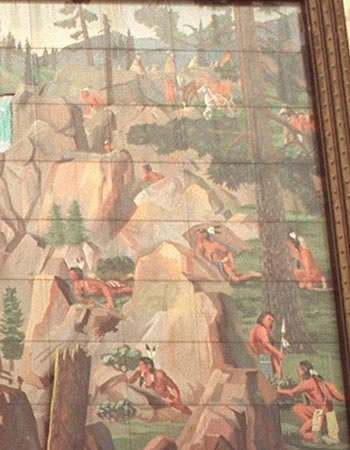
Seizing an opportunity, the Bush White House instructed U.S. Attorneys to investigate and prosecute "voter fraud" cases. Not vote fraud, which would be more appropriate given the widespread, dead-on-target criticism of the 2004 presidential election debacle. Voter fraud refers to the belief by Republican politicians that minorities register to vote under fake names and addresses to throw elections in favor of Democratic candidates. Essentially, voter fraud means voting while black, Indian, poor, imprisoned or gay. Voting - and having their votes count - has become increasingly difficult for these groups.
This is the backdrop for the firing of seven U.S. Attorneys by the Justice Department in closely contested ("battleground") states: Arizona, New Mexico, Wisconsin, Washington, Michigan, California and Nevada.
Novak: Indians stole the SD election by stuffing ballot boxes
P.S. This illustration is unrelated to Novak's comments except that it shows skulking Indians. Novak was primed to believe Indians are corrupt cheaters because of centuries of media images showing them as sneaky savages.

Media images "dominate our consciousness"
"Legacy and Legend: Images of Indians from Four Centuries""For centuries European-trained artists created art for audiences that knew little about Indians, and so their images often romanticized them and focused on the more dramatic," says guest curator Kathryn Hight. As artists capitalized on new printing technologies and a growing demand for prints and illustrated books, they worked to make their pieces marketable by depicting the more colorful aspects of Indian culture: unusual clothing and adornment, ritual ceremonies, and dangerous activities such as buffalo hunting. "This selective view created a skewed interpretation of Indian life that has shaped the public's understanding of Native American culture," Hight says. "As artists and craftsmen struggled to interpret what they had seen and learned into forms acceptable to non-Indian markets, they grafted the new images onto the traditions with which they and their audiences were familiar. Their interpretations inevitably distorted perceptions of Indian life, resulting in early forms of docudrama. An American visual epic was being made."
In the 19th century, artists like Catlin and Edward Curtis saw their work as preserving cultures in decline. "Their work often shows Indians dressed from past eras in settings created by the artist's imagination," says Hight. While artists depicted Indian life as immutable, by the early part of the 20th century Indian life had changed markedly, adapting in the wake of European settlement. "It was a much more complicated picture than many artists were willing to portray," says Hight. "While the show does depict a great variety of Indian images, the fact is only a few transcended time, and those are what dominate our consciousness even today." Comment: Once again, an expert has spoken. Media images "created a skewed interpretation of Indian life" and "dominate our consciousness even today." Anyone who has studied the issue knows this to be true.
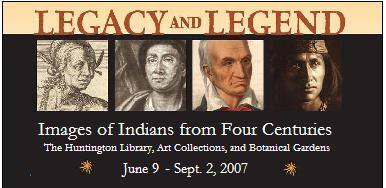
In the 19th century, artists like Catlin and Edward Curtis saw their work as preserving cultures in decline. "Their work often shows Indians dressed from past eras in settings created by the artist's imagination," says Hight. While artists depicted Indian life as immutable, by the early part of the 20th century Indian life had changed markedly, adapting in the wake of European settlement. "It was a much more complicated picture than many artists were willing to portray," says Hight. "While the show does depict a great variety of Indian images, the fact is only a few transcended time, and those are what dominate our consciousness even today."

First win on sacred site
Tribes Invoke Gods to Block Wastewater Snowmaking"In today's world, it is impossible to run a ski area depending on natural snowfall," says Eric Borowsky, general partner of the Snowbowl resort.
But in March, a three-judge panel of the Ninth Circuit Court of Appeals killed the scheme. The reason: The mountaintops are sacred to the Navajo and 12 other tribes, even though the land is not part of their reservations.
The tribes regard the mountains as living deities that would be offended by man-made snowmaking, especially if it used treated wastewater that the tribes contend would contaminate plants and spring water used in religious ceremonies. The court compared spraying snow made from treated wastewater on the peaks to requiring Christians to use reclaimed water for baptisms.
That ruling has given new hope to similar challenges from Indian tribes across the West.
At issue is the interpretation of the Religious Freedom Restoration Act, or RFRA, which Congress passed in 1993 with almost unanimous support after the Supreme Court upheld a government decision to deny unemployment benefits to two Native Americans fired for using illegal drugs in a religious ceremony. In the past, courts denied that the First Amendment's religious-freedom protections extend to American Indians who challenge federal land-use decisions. RFRA changed that by requiring the government to demonstrate a compelling interest when considering any action that would substantially burden a religious practice. The Snowbowl case is the first to successfully apply the law to a sacred site, says Howard Shanker, the Flagstaff attorney who represented several of the tribes before the court. 
But in March, a three-judge panel of the Ninth Circuit Court of Appeals killed the scheme. The reason: The mountaintops are sacred to the Navajo and 12 other tribes, even though the land is not part of their reservations.
The tribes regard the mountains as living deities that would be offended by man-made snowmaking, especially if it used treated wastewater that the tribes contend would contaminate plants and spring water used in religious ceremonies. The court compared spraying snow made from treated wastewater on the peaks to requiring Christians to use reclaimed water for baptisms.
That ruling has given new hope to similar challenges from Indian tribes across the West.
At issue is the interpretation of the Religious Freedom Restoration Act, or RFRA, which Congress passed in 1993 with almost unanimous support after the Supreme Court upheld a government decision to deny unemployment benefits to two Native Americans fired for using illegal drugs in a religious ceremony. In the past, courts denied that the First Amendment's religious-freedom protections extend to American Indians who challenge federal land-use decisions. RFRA changed that by requiring the government to demonstrate a compelling interest when considering any action that would substantially burden a religious practice. The Snowbowl case is the first to successfully apply the law to a sacred site, says Howard Shanker, the Flagstaff attorney who represented several of the tribes before the court.

Chief features angry Indian
Local filmmaker sharing spotlight at festivalDoug Howard is creating his dream as a filmmaker.
Howard spent seven months shooting and editing his first film, Chief, a short movie about a Native American who keeps his grandfather's promise by saving the tribe's dam.
The Pima-Maricopa creator will feature his film at the American Indian Film Institute's annual film tour June 13, 15 and 16 at the Salt River Pima-Maricopa Indian Community.
The three-day tour features films from across the nation, including award-winning Native American films, promoted by San Francisco-based institute, a non-profit media arts center founded in 1979 to foster understanding of the culture, traditions and issues of contemporary Native Americans.
"I wanted to portray a very atypical Native American character that one may not be used to seeing in a movie. He's very angry. Basically, I kind of got tired of how Native Americans are portrayed in movies. Usually it's someone to be sympathized, or somebody to be passive or a stereotypical savage type," Howard said. Comment: Skins, The Business of Fancydancing, Dreamkeeper, Edge of America, and Black Cloud are among the movies featuring angry Indians, so it's far from unheard of. If the concept isn't overused yet, it's getting there.
In comics, the angry Indian (usually a military vet) is commonplace. The angry Indian grandson who takes up his grandfather's cause is common enough to be a cliché.

Howard spent seven months shooting and editing his first film, Chief, a short movie about a Native American who keeps his grandfather's promise by saving the tribe's dam.
The Pima-Maricopa creator will feature his film at the American Indian Film Institute's annual film tour June 13, 15 and 16 at the Salt River Pima-Maricopa Indian Community.
The three-day tour features films from across the nation, including award-winning Native American films, promoted by San Francisco-based institute, a non-profit media arts center founded in 1979 to foster understanding of the culture, traditions and issues of contemporary Native Americans.
"I wanted to portray a very atypical Native American character that one may not be used to seeing in a movie. He's very angry. Basically, I kind of got tired of how Native Americans are portrayed in movies. Usually it's someone to be sympathized, or somebody to be passive or a stereotypical savage type," Howard said.
In comics, the angry Indian (usually a military vet) is commonplace. The angry Indian grandson who takes up his grandfather's cause is common enough to be a cliché.

Burns and Americans ignore West
Commentary: Hispanics and American Indians
Other sides of the West and American historyIn taking this Eastern seaboard approach to the study of World War II, baseball and jazz, Burns reflects his East Coast roots, as well as the prejudices of many American history textbooks and survey courses.
Contemporary celebrations regarding the 400th anniversary of the Jamestown founding tend to ignore the fact that American history began well before the establishment of the first permanent English settlement.
Focusing upon 1607 as a beginning date for American history leaves out much of the American Indian experience and Spanish colonization in the Southwest.
In the grand master narrative of American history, the heroic Jamestown story is usually followed by the saga of the Pilgrims and Puritans in New England and the English colonization of the Atlantic seaboard, culminating in the American Revolution and the formation of a new experiment in representative government.
While the master narrative has expanded to include the story of women, laboring classes, American Indians and slavery in the forging of the revolution and early republic, the trans-Mississippi West really only enters the story with Thomas Jefferson's Louisiana Purchase along with the Lewis and Clark expedition which paved the path for westward expansion. 
Other sides of the West and American history
Contemporary celebrations regarding the 400th anniversary of the Jamestown founding tend to ignore the fact that American history began well before the establishment of the first permanent English settlement.
Focusing upon 1607 as a beginning date for American history leaves out much of the American Indian experience and Spanish colonization in the Southwest.
In the grand master narrative of American history, the heroic Jamestown story is usually followed by the saga of the Pilgrims and Puritans in New England and the English colonization of the Atlantic seaboard, culminating in the American Revolution and the formation of a new experiment in representative government.
While the master narrative has expanded to include the story of women, laboring classes, American Indians and slavery in the forging of the revolution and early republic, the trans-Mississippi West really only enters the story with Thomas Jefferson's Louisiana Purchase along with the Lewis and Clark expedition which paved the path for westward expansion.

TV minorities = sidekicks
Diversity still an issue at TV networks
Black, Latino and Asian groups feel multicultural momentum has been lost.[I]nstead of celebrating, leaders from the NAACP, in addition to Latino and Asian advocacy groups monitoring the TV industry for years, are disappointed, saying network television is sending mixed messages when it comes to diversity. Although they say there is obvious progress, they contend the fall lineup, particularly when it comes to the new comedies and dramas on ABC, NBC, CBS and Fox, falls short after what they feel has been positive momentum on shows such as "Ugly Betty," "Grey's Anatomy," "Heroes" and "Lost."
Though minorities are featured in most of the 29 new series on the major networks, only five feature performers of color in central starring roles. While most of the shows have at least one regular minority cast member, the performers are mostly in support of the main white characters. Many shows with ensemble casts (ABC's "Dirty Sexy Money" and "Big Shots") feature predominantly white casts. 
Black, Latino and Asian groups feel multicultural momentum has been lost.
Though minorities are featured in most of the 29 new series on the major networks, only five feature performers of color in central starring roles. While most of the shows have at least one regular minority cast member, the performers are mostly in support of the main white characters. Many shows with ensemble casts (ABC's "Dirty Sexy Money" and "Big Shots") feature predominantly white casts.

The slow-motion massacre
Good posting in Pictographs comparing the destruction of cultures and languages to physical massacres. Key quote:[T]he massacres that started in 1492 are still happening today. They are hitting right at the heart of us, of who we are, because they are attacking our languages and our culture. The slow-motion massacre is occurring in curricula, it's occurring in media, it's occurring in the books that we read, it's occurring in the loss of our languages. 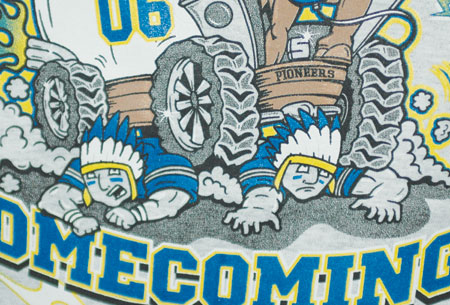

June 07, 2007
No contact, no death
Peru: Second Oil Company Blocked Over Uncontacted TribesThe Peruvian government has blocked oil exploration by US company Barrett Resources in the northern Amazon over concerns about uncontacted tribes living there.
Peru's Energy Ministry has rejected Barrett's environmental impact assessment (EIA) of plans to develop its oil discovery. One of the main reasons is that the EIA failed to take into account adequately the uncontacted tribes living in the area. Why the halt is necessary:Recently the chairman of Perupetro, the state oil company, caused outrage by questioning the tribes' existence and then announcing plans to contact them. Because of their isolation, the tribes are extremely vulnerable to disease and any form of contact can be fatal.
Survival's director Stephen Corry said today, 'Good news, but of course it's only temporary. Now the Ministry needs to prohibit oil activity in areas inhabited by uncontacted tribes and companies should agree to keep out. International law recognises this land as the tribes', and so should Barrett and Repsol.' Comment: Too bad the Peruvian government didn't do this during the End of the Spear period. In fact, too bad no Euro-American government, including ours, ever took this approach with Native people. We could've prevented millions of people and thousands of cultures from dying.
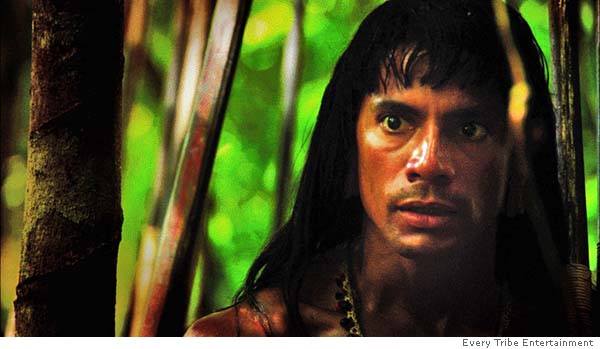
Peru's Energy Ministry has rejected Barrett's environmental impact assessment (EIA) of plans to develop its oil discovery. One of the main reasons is that the EIA failed to take into account adequately the uncontacted tribes living in the area.
Survival's director Stephen Corry said today, 'Good news, but of course it's only temporary. Now the Ministry needs to prohibit oil activity in areas inhabited by uncontacted tribes and companies should agree to keep out. International law recognises this land as the tribes', and so should Barrett and Repsol.'

We, Some People
A comment on the annual set of books chosen by the National Endowment for the Humanities and the American Library Association:
"We" the People?After the first "Bookshelf" list came out, several Native scholars and parents noted the complete absence of books by Native writers, while two of the books, Little House on the Prairie and The Matchlock Gun, contained extremely negative representations of indigenous people. There was no way that a Native child could find in that collection (called Courage) any images of people of his/her heritage suggesting that his/her ancestors might in fact have been courageous, or even fully human and equal in importance to the "settlers". There were more problems with that year's list, but I'll just stick to the problematic representations of indigenous North Americans.
The next year, "Freedom" was the metaphor/topic and again no works by Native writers (or illustrators) were included, though one story with a Native protagonist, by a white writer, appears--the problematic The Girl Who Loved Wild Horses by Paul Goble. The implication of this absence is that Native people's stories have no relevance in discussions of "Freedom". The irony grows painful. (Excerpted from Debbie Reese's American Indians in Children's Literature, 6/7/07.)
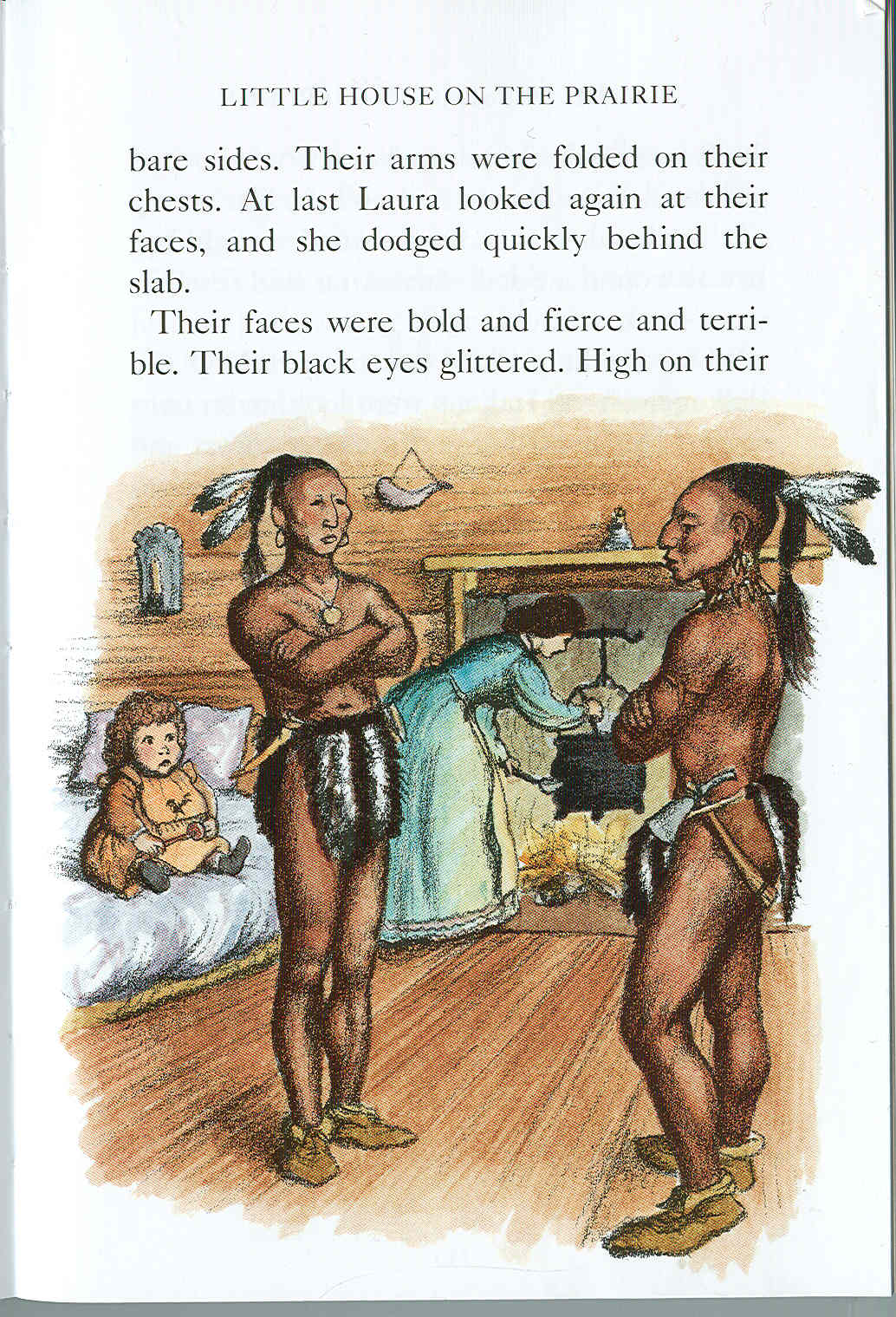
"We" the People?
The next year, "Freedom" was the metaphor/topic and again no works by Native writers (or illustrators) were included, though one story with a Native protagonist, by a white writer, appears--the problematic The Girl Who Loved Wild Horses by Paul Goble. The implication of this absence is that Native people's stories have no relevance in discussions of "Freedom". The irony grows painful.

How to deal with white men
Outspoken chief rejects council call to resignA Manitoba First Nations chief whose controversial comments made national headlines is refusing to step down, even though a band watchdog group has voted to remove him and his councillors from office.
Speaking to news organizations last month, Chief Terry Nelson of the Roseau River First Nation said: "There's only one way to deal with a white man. You either pick up a gun or you stand between him and his money." Other Indians disagree:Council member Felix Antoine, a former chief and a political rival of Nelson's, said the comments were the final straw for the group.
"He's humiliating us, embarrassing us. We don't want to be portrayed as terrorists. We have to put a stop to this," he said. Comment: Nelson offers two ways to deal with white men, not one. His statement is a grossly overblown and racist generalization, of course, even if it's based on a kernel of truth.

Speaking to news organizations last month, Chief Terry Nelson of the Roseau River First Nation said: "There's only one way to deal with a white man. You either pick up a gun or you stand between him and his money."
"He's humiliating us, embarrassing us. We don't want to be portrayed as terrorists. We have to put a stop to this," he said.

Rez doesn't meet expectations
Indian Reservation Rich With CultureIn King William County, about 45 miles from Richmond off Route 1, is a tract about 1,200 acres that is very special in Virginia and indeed, in the entire nation. It is a peninsula with only one road leading in or out. In many respects, it has retained the vestiges of long ago--harvesting local game, planting crops and the creation of earthenware. The land is the home of very proud people--the Pamunkey People.
Bounded by the Pamunkey River and Norfolk Southern Railroad tracks, the reservation does not meet Hollywood expectations when visiting Native American lands--visitors will not find tepees or dilapidated houses. The homes, of approximately 75 members of the tribe, are modest, well-kept and encompass the natural landscape. Acceptance of some of society's modernity outside the reservation boundaries is visible, but so-called benefits, such as casinos, fast-food restaurants and garish neon lights, are not. 
Bounded by the Pamunkey River and Norfolk Southern Railroad tracks, the reservation does not meet Hollywood expectations when visiting Native American lands--visitors will not find tepees or dilapidated houses. The homes, of approximately 75 members of the tribe, are modest, well-kept and encompass the natural landscape. Acceptance of some of society's modernity outside the reservation boundaries is visible, but so-called benefits, such as casinos, fast-food restaurants and garish neon lights, are not.

June 06, 2007
Review of Drums Along the Mohawk
Drums Along the MohawkDrums Along the Mohawk is a 1939 John Ford film starring Claudette Colbert, Henry Fonda and Edna May Oliver. The film was nominated for two Academy Awards: Best Supporting Actress (Edna May Oliver) and Best Cinematography (Ray Rennahan and Bert Glennon).
In the movie, Henry Fonda played pioneer settler Gil Martin, with Claudette Colbert as his wife Magdalena "Lana" Martin.
The plot was based on an historical novel of the American Revolution written by Walter D. Edmonds. Published in 1936 and extremely popular, it was made into a film in 1939.
The setting is the Mohawk River Valley during the American Revolution, which was subjected to numerous raids by the British, American Tories, and their Iroquois allies. Included in both works is a fictitious representation of the siege of Fort Stanwix. Drums Along the Mohawk FactsDRUMS ALONG THE MOHAWK is John Ford's first film in Technicolor (which recently perfected far richer shadings of color than had previously been possible), and the director uses it to stunning effect. The film stars Henry Fonda as Revolutionary War-era farmer Gilbert Martin, who, in 1776, has returned with his well-born wife, Lana (Claudette Colbert), to his rustic cabin in the increasingly dangerous Mohawk River valley. At first unaccustomed to the harsh physical challenges of frontier life, Lana adjusts to the work at hand and is soon able to help her husband in the fields. Shortly after they learn that the colonies are at war with the British, their farmhouse is attacked and burned to the ground by a party of Tory-led Indians. The feisty Widow McKlennar (Edna May Oliver) provides temporary shelter for the couple, but it's only a matter of time before the Indians launch a more brutal assault. Save for THE QUIET MAN, DRUMS ALONG THE MOHAWK contains the richest passages of pastoral imagery in Ford's entire canon, the visual beauty nearly upstaging the spectacular and terrifying Indian battles. The performances, particularly Oliver (who garnered an Oscar nomination) as the vinegary widow and the superbly stoic Fonda, enable Ford to again demonstrate the heroism and limitations of rugged individualism. The scenes of an Indian prisoner spread-eagled on a wagon and Gilbert's escape are repeated almost exactly in the 1982 dystopian classic THE ROAD WARRIOR. Drums Along the Mohawk ReviewThis, one of four films made by Ford in the space of a year, was his first film in colour, adapted from a 'factually inspired' novel set just before the American Revolution. From this socio-political material Ford distils the story of a young woodsman (Fonda) who brings his city bride out West. Their struggles are set against a Fordian celebration of the pioneer spirit. Full of great moments, it is crowned by the epic sequence in which Fonda, pursued by Indian braves, races to the fort. The final acknowledgement of his victory by his remaining pursuer is a stirring moment. Comment: This film opens with the sound of war drums. Not a good sign, but its portrayal of Indians turns out to be surprisingly complex. It's certainly more complex than some portrayals done decades later, such as those in The Unforgiven (1960).
Indians appear in three contexts in Drums. Let's look at them:
Blue Back: An Indian stands in a cabin doorway lit in red and announced by a thunderclap. Scary stuff, but this Indian turns out to be one of the good guys.
True, Blue Back's characterization is far from perfect. He's there mainly for comic relief. Perhaps the worst part is how he speaks like a stereotypical Tonto:
"Me go hunting. Bring you half deer. Hang outside." "No. Me go now. Come back again, maybe."
On the other hand, he has an authentic-sounding name, not a phony one like "Soaring Eagle" or "Brave Bear." And he's a Christian ("As good a Christian as you or me," says Gil). Making him a Christian rather than a "noble savage" who speaks airily of the Great Spirit is an atypical choice.
Moreover, Blue Back apparently kills the British agent Caldwell at the end. He speaks a line in a Native language, perhaps Mohawk. And he's played by someone who seems to be an Indian: Chief Big Tree.
The pair of Indians who attack Mrs. McKlennar: Two Indians invade the widow's bedroom while she's in bed. "Burn house fire quick," says one of them, while the other drinks from a jug.
McKlennar berates them as they set the room on fire and refuses to abandon her heirloom bed. "Filthy drunken rascal," she labels one of them, and "crazy horse thieves." She's so forceful that she cows the pair into submission. Rather than harm her, they save her, carrying her and the bed to safety.
Again, we see a mix of stereotypes and non-stereotypes. The Indians begin as drunken savages but redeem themselves by acting humanely. They're not pure evil.
The rest of the Indians: Hordes of Indians whoop and burn the settlers' homes. They attack the fort and when they catch a scout, they crucify and burn him alive. These Indians have no individuality; they're a savage mass of destruction.
The settlers treat them thusly with a series of epithets:
"Sons of Belial" "Greasy devils" "Filthy painted heathens"
The one saving grace is that they're shown following the British agent's orders at least once. This implicitly acknowledges that the Indians weren't just rampaging because it was their nature. No, they allied themselves with the Americans or the British for strategic reasons. They shrewdly calculated where the advantage lay and acted accordingly.
I also credit the movie for its extended anti-war scene. Lana waits desperately for Gil to appear as a line of injured, weary soldiers straggles by. When Gil finally shows up, he talks about how warfare is so much worse than one imagines. A roomful of injured veterans, one of whom requires amputation, reinforces the point. It's a remarkable bit considering this movie was made in the run-up to World War II.
Overall, I liked Drums better than the similar The Last of the Mohicans. Its portrayal of Indians isn't as bad as some of the Westerns I've seen. Rob's rating: 8.0 of 10.
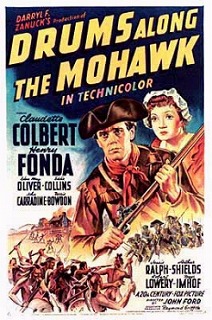
In the movie, Henry Fonda played pioneer settler Gil Martin, with Claudette Colbert as his wife Magdalena "Lana" Martin.
The plot was based on an historical novel of the American Revolution written by Walter D. Edmonds. Published in 1936 and extremely popular, it was made into a film in 1939.
The setting is the Mohawk River Valley during the American Revolution, which was subjected to numerous raids by the British, American Tories, and their Iroquois allies. Included in both works is a fictitious representation of the siege of Fort Stanwix.
Indians appear in three contexts in Drums. Let's look at them:
Blue Back: An Indian stands in a cabin doorway lit in red and announced by a thunderclap. Scary stuff, but this Indian turns out to be one of the good guys.
True, Blue Back's characterization is far from perfect. He's there mainly for comic relief. Perhaps the worst part is how he speaks like a stereotypical Tonto:
On the other hand, he has an authentic-sounding name, not a phony one like "Soaring Eagle" or "Brave Bear." And he's a Christian ("As good a Christian as you or me," says Gil). Making him a Christian rather than a "noble savage" who speaks airily of the Great Spirit is an atypical choice.
Moreover, Blue Back apparently kills the British agent Caldwell at the end. He speaks a line in a Native language, perhaps Mohawk. And he's played by someone who seems to be an Indian: Chief Big Tree.
The pair of Indians who attack Mrs. McKlennar: Two Indians invade the widow's bedroom while she's in bed. "Burn house fire quick," says one of them, while the other drinks from a jug.
McKlennar berates them as they set the room on fire and refuses to abandon her heirloom bed. "Filthy drunken rascal," she labels one of them, and "crazy horse thieves." She's so forceful that she cows the pair into submission. Rather than harm her, they save her, carrying her and the bed to safety.
Again, we see a mix of stereotypes and non-stereotypes. The Indians begin as drunken savages but redeem themselves by acting humanely. They're not pure evil.
The rest of the Indians: Hordes of Indians whoop and burn the settlers' homes. They attack the fort and when they catch a scout, they crucify and burn him alive. These Indians have no individuality; they're a savage mass of destruction.
The settlers treat them thusly with a series of epithets:
The one saving grace is that they're shown following the British agent's orders at least once. This implicitly acknowledges that the Indians weren't just rampaging because it was their nature. No, they allied themselves with the Americans or the British for strategic reasons. They shrewdly calculated where the advantage lay and acted accordingly.
I also credit the movie for its extended anti-war scene. Lana waits desperately for Gil to appear as a line of injured, weary soldiers straggles by. When Gil finally shows up, he talks about how warfare is so much worse than one imagines. A roomful of injured veterans, one of whom requires amputation, reinforces the point. It's a remarkable bit considering this movie was made in the run-up to World War II.
Overall, I liked Drums better than the similar The Last of the Mohicans. Its portrayal of Indians isn't as bad as some of the Westerns I've seen. Rob's rating: 8.0 of 10.

The distortion of Charles Eastman
The portrayal of Dr. Charles Alexander Eastman Having Eastman as a main character in the film is not a major issue; having him working with Henry Dawes in formulating the Dawes Act is unconscionable. In fact, the repeated appearances in many scenes of Eastman and Dawes, and even Elaine Goodale on several occasions, who would become Eastman's wife, takes poetic license too far and distorts history too much. The film version of Dawes arranging the meeting of Charles and Elaine, with her approving mother present, never happened. In fact, Elaine's mother was a racist who did not want her daughter to marry him and even threatened not to attend their wedding. Yes, Eastman did initially support aspects of the Dawes Act, particularly the granting of citizenship to Indians, but he later denounced the legislation. Additionally, Dawes never was the mentor of Eastman and did not help him secure the position of renaming the Indians after Eastman resigned as a government physician.
Adam Beach did a superb job as Charles Eastman (as did Anna Paquin as Elaine Goodale). It is too bad that Beach did not or perhaps could not demand a more accurate portrayal of this fascinating, controversial and significant man. Several of my colleagues who teach Indian history have expressed similar views about the inaccuracies of Eastman's life in the film as well as many other historical fabrications. If the main purpose of the film is to educate non-Indians about Indian history, why include so many historical inaccuracies that were not needed? Does this not weaken the main objective? This writer realizes that Hollywood needs to apply poetic license to its films to make them more "attractive" and entertaining. I would argue, however, that a more accurate portrayal of the life of Charles Eastman would have made the film better and would still have the entertainment qualities required. 
Adam Beach did a superb job as Charles Eastman (as did Anna Paquin as Elaine Goodale). It is too bad that Beach did not or perhaps could not demand a more accurate portrayal of this fascinating, controversial and significant man. Several of my colleagues who teach Indian history have expressed similar views about the inaccuracies of Eastman's life in the film as well as many other historical fabrications. If the main purpose of the film is to educate non-Indians about Indian history, why include so many historical inaccuracies that were not needed? Does this not weaken the main objective? This writer realizes that Hollywood needs to apply poetic license to its films to make them more "attractive" and entertaining. I would argue, however, that a more accurate portrayal of the life of Charles Eastman would have made the film better and would still have the entertainment qualities required.

Preview of Hiawatha Diary
Hiawatha DiaryTo this date there has never been a feature film regarding the Hiawatha Asylum for Insane Indians. This has not been for a lack of trying, though. Valiant efforts have been made over the years to write scripts or put together a production but for one reason or another, these projects either were not completed or publically released.
Other than a recent mention in a film regarding Native boarding schools, Hiawatha's reality remains elusive to the American public. But not for long...
Fourteen years ago, our screenwriter stumbled across a book regarding the asylum and was shocked and disturbed by its contents. Interested in the asylum and its history, she began to research on her own, realizing that the truth had never been revealed to the public. She realized that a movie would be a great medium by which to release this information. This led her on an amazing trip through time where she had to remain decidely low-key in her research. The asylum, while a non-subject to the people of the City of Canton, is still a painful and dark subject for many Native Americans. Many elders still refuse to talk about Hiawatha or what went on there. Out of respect for their pain and the past, she progressed slowly and carefully, garnering information wherever and whenever she could.
After spending several weeks in the South Dakota State Historical Archives, she found herself talking to Harold Ironshield, a Lakota journalist and then head of the Native American Burial Restoration Committee. It was Mr. Ironshield who shed much more light on how much more went on behind the walls of Hiawatha, things that while barely touched upon in the state archives, had far more sordid detail in reality.
Seeing her determination and drive to see this project to completion on the screen, we at Still Springs joined her in the production process. In 2006 we joined forces with Dr. Todd Leahy of Fort Hayes State University, the foremost academic authority on the asylum. Dr. Leahy possessed far more information and documentation than the state archives regarding the asylum. We were able to see pictures of actual patients, learn the content (or lack thereof) of patient files and Dr. Hummer's journals. With a very well written Dissertation--which there is a link to on our Hiawatha links page--Dr. Leahy reveals the true and horrifying realities of Hiawatha, the abuse of its patients and the arrogant dictatorship of Dr. Hummer. All of this aided in creating a well rounded picture of the asylum and what truly went on there. The end result is Hiawatha Diary, a full length feature docudrama scheduled to start filming in 2007.
Other than a recent mention in a film regarding Native boarding schools, Hiawatha's reality remains elusive to the American public. But not for long...
Fourteen years ago, our screenwriter stumbled across a book regarding the asylum and was shocked and disturbed by its contents. Interested in the asylum and its history, she began to research on her own, realizing that the truth had never been revealed to the public. She realized that a movie would be a great medium by which to release this information. This led her on an amazing trip through time where she had to remain decidely low-key in her research. The asylum, while a non-subject to the people of the City of Canton, is still a painful and dark subject for many Native Americans. Many elders still refuse to talk about Hiawatha or what went on there. Out of respect for their pain and the past, she progressed slowly and carefully, garnering information wherever and whenever she could.
After spending several weeks in the South Dakota State Historical Archives, she found herself talking to Harold Ironshield, a Lakota journalist and then head of the Native American Burial Restoration Committee. It was Mr. Ironshield who shed much more light on how much more went on behind the walls of Hiawatha, things that while barely touched upon in the state archives, had far more sordid detail in reality.
Seeing her determination and drive to see this project to completion on the screen, we at Still Springs joined her in the production process. In 2006 we joined forces with Dr. Todd Leahy of Fort Hayes State University, the foremost academic authority on the asylum. Dr. Leahy possessed far more information and documentation than the state archives regarding the asylum. We were able to see pictures of actual patients, learn the content (or lack thereof) of patient files and Dr. Hummer's journals. With a very well written Dissertation--which there is a link to on our Hiawatha links page--Dr. Leahy reveals the true and horrifying realities of Hiawatha, the abuse of its patients and the arrogant dictatorship of Dr. Hummer. All of this aided in creating a well rounded picture of the asylum and what truly went on there. The end result is Hiawatha Diary, a full length feature docudrama scheduled to start filming in 2007.
Labels:
healthcare,
movies
"Darkie" principal pushes students
Chavis in Hot Water
As accusations pile up against firebrand principal, Oakland school district demands an investigation.Chavis has become one of the East Bay's most celebrated educators and a darling among conservatives because of his school's unbelievable test scores. Last year, American Indian middle school scored a perfect ten on the state's Academic Performance Index, and the Bush administration named it one of the top 250 schools in the country.
But some Oakland educators and parents have been quietly concerned for years about Chavis' over-the-top methods. He uses racially charged language and humiliating taunts to motivate his students. He describes minorities as "darkies" and derides underperforming students as "an embarrassment" to their race. "I use 'darkie' every day," he explained last month. "I use it in the context that I'm Indian and I'm black. I'm a darkie."
As accusations pile up against firebrand principal, Oakland school district demands an investigation.
But some Oakland educators and parents have been quietly concerned for years about Chavis' over-the-top methods. He uses racially charged language and humiliating taunts to motivate his students. He describes minorities as "darkies" and derides underperforming students as "an embarrassment" to their race. "I use 'darkie' every day," he explained last month. "I use it in the context that I'm Indian and I'm black. I'm a darkie."
BBB likes BCC
An e-mail from the Brady Braves Bureau:many thanks, Rob (if i may), for checking out bradybraves.blogspot. the staff here at the bureau of brady braves has been a fan of your work for a couple of years now. many of my university students have had required readings at bluecorncomics.com on "indian" mascots and, as a result, have changed their minds about supporting "indian"-named teams. 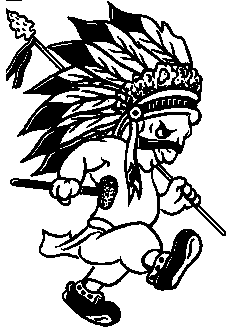

June 05, 2007
Polynesians were here first
Polynesians beat Spaniards to South America, study shows
Analysis of chicken bones found in Chile shows Polynesians reached the continent no later than 1407.After decades of contention, New Zealand researchers have provided the first direct evidence that Polynesians sailed across thousands of miles of the Pacific Ocean to reach South America long before the arrival of the Spanish around AD 1500.
Their proof? Chicken bones.
Using genetic analysis and radiocarbon dating of chicken bones found in Chile, the researchers showed that the fowl originated in Polynesia, not Europe as was previously believed, the researchers said Monday.
"The Polynesian contact probably didn't change the course of prehistory, but I think maybe it makes us recognize the ethnocentrism in our long-standing views of the prehistory of the New World," said archeologist Terry L. Jones of Cal Poly San Luis Obispo, who was not involved in the research. Comment: Will this finding end our fetishizing of Christopher Columbus? Will we raise statues and stage parades to honor the first explorers to "discover" America? Of course not.

Analysis of chicken bones found in Chile shows Polynesians reached the continent no later than 1407.
Their proof? Chicken bones.
Using genetic analysis and radiocarbon dating of chicken bones found in Chile, the researchers showed that the fowl originated in Polynesia, not Europe as was previously believed, the researchers said Monday.
"The Polynesian contact probably didn't change the course of prehistory, but I think maybe it makes us recognize the ethnocentrism in our long-standing views of the prehistory of the New World," said archeologist Terry L. Jones of Cal Poly San Luis Obispo, who was not involved in the research.

On the Lot nixes Arapaho
Inches & Adam Beach...On Looking for Steady Work as a Native Movie MakerI anticipated becoming one of the contestants that must make one movie a week and are voted off based on how good their movie is. If I could get on the show, even if I am voted off the first week, I will have achieved something very few Native Americans experience; mainstream network exposure. If I were voted to stay on, I would have to rise to the peak of my skills in writing, producing, and directing one short movie a week for twenty weeks. I could make a living making movies, no matter the reality television construct. And I would get exposure for my works.
The show premiered without me.
I did not even get a rejection notice. Not even a “your experience does not match our requirements”. So, my short-lived television career comes to an end. Could it be that I was not Indian-y enough? More beads and feathers perhaps? Honestly, the only time when most non-Natives even acquiesce to view Natives as contemporary is when we explore all the sad and bad things about being Native American. So the non-Native public can say, oh, poor things, that’s terrible, and go back to their dinners. Or maybe, Steven Spielberg, one of the producers of the show, read some of the commentary I wrote about him and nixed me. (I could at least buy that one.) 
The show premiered without me.
I did not even get a rejection notice. Not even a “your experience does not match our requirements”. So, my short-lived television career comes to an end. Could it be that I was not Indian-y enough? More beads and feathers perhaps? Honestly, the only time when most non-Natives even acquiesce to view Natives as contemporary is when we explore all the sad and bad things about being Native American. So the non-Native public can say, oh, poor things, that’s terrible, and go back to their dinners. Or maybe, Steven Spielberg, one of the producers of the show, read some of the commentary I wrote about him and nixed me. (I could at least buy that one.)

All about Native Voices
Romeo and Sacagawea and a Talking Dog, Too: Native Voices Brings an Indigenous Perspective to TheaterA Native version of Romeo and Juliet. Lewis and Clark from Sacagawea’s point of view. A commodity cheese-based superhero with a talking-dog sidekick.
When you think of Native storytelling, you think of movies (Dances with Wolves, Smoke Signals), books (Black Elk Speaks, The Lone Ranger and Tonto Fistfight in Heaven), even cartoons and comic books. What you don’t think of is the Native theater, and plays that can stand the test of time. But Los Angeles-based Native Voices, an Equity theater company devoted to Native American plays, is trying to change that.
Since 2001, Native Voices has mounted eight Equity productions. Several have gone on to other locations and been published. The program has helped hundreds of budding Natives playwrights hone their skills and begin crafting scripts. 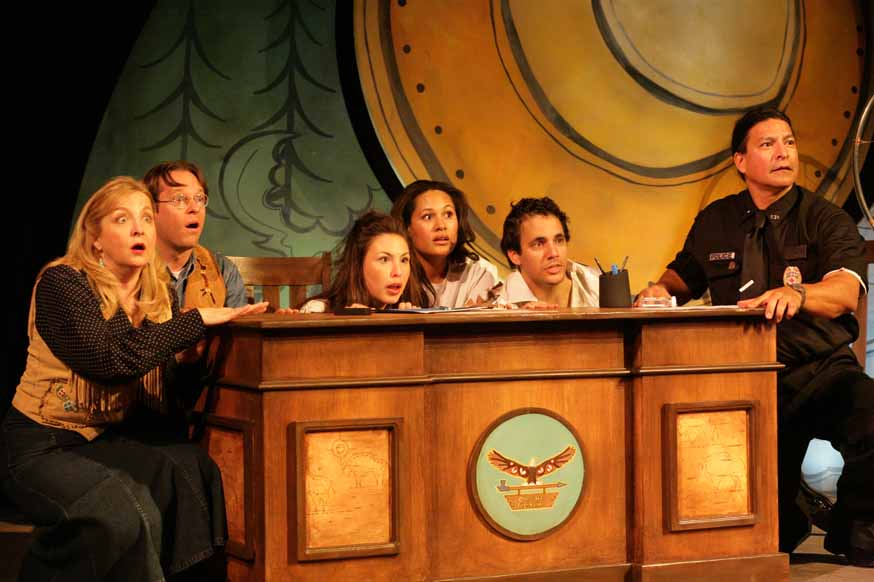
When you think of Native storytelling, you think of movies (Dances with Wolves, Smoke Signals), books (Black Elk Speaks, The Lone Ranger and Tonto Fistfight in Heaven), even cartoons and comic books. What you don’t think of is the Native theater, and plays that can stand the test of time. But Los Angeles-based Native Voices, an Equity theater company devoted to Native American plays, is trying to change that.
Since 2001, Native Voices has mounted eight Equity productions. Several have gone on to other locations and been published. The program has helped hundreds of budding Natives playwrights hone their skills and begin crafting scripts.

O'Reilly: WASPs should rule
O’Reilly, McCain discuss the ‘white, Christian, male power structure’Bill O’Reilly: But do you understand what the New York Times wants, and the far-left want? They want to break down the white, Christian, male power structure, which you’re a part, and so am I, and they want to bring in millions of foreign nationals to basically break down the structure that we have. In that regard, Pat Buchanan is right. So I say you’ve got to cap it with a number.
O’Reilly’s concern for maintaining the “white, Christian, male power structure” struck me as about as offensive as what got Don Imus fired.
Think about it—if a KKK official appeared on Fox News, wouldn’t you expect him to make similar comments? And isn’t it more than a little disconcerting when O’Reilly’s rhetoric and racist rhetoric is one and the same? 
O’Reilly’s concern for maintaining the “white, Christian, male power structure” struck me as about as offensive as what got Don Imus fired.
Think about it—if a KKK official appeared on Fox News, wouldn’t you expect him to make similar comments? And isn’t it more than a little disconcerting when O’Reilly’s rhetoric and racist rhetoric is one and the same?

Actress tackles Big Oil
Daryl Hannah visits Ecuador Indians suing ChevronActress Daryl Hannah said she planned to meet with Ecuador's president on Tuesday to discuss a lawsuit by Indians and settlers against Chevron Corp., a day after she trudged through the jungle to visit a polluted site.
San Ramon, Calif.-based Chevron is on trial in Lago Agrio, 110 miles east of the capital, Quito, for allegedly failing to clean up billions of gallons of toxic wastewater.
The 46-year-old star of the 1984 hit movie "Splash," rolled up a sleeve of her shirt and dipped it into an oil pit, holding it above her head as the thick liquid dripped down her arm.
"Obviously they're suffering severely," she said by telephone from her hotel in the jungle town. "A whole host of horrors have come their way with the advent of supposed civilization." 
San Ramon, Calif.-based Chevron is on trial in Lago Agrio, 110 miles east of the capital, Quito, for allegedly failing to clean up billions of gallons of toxic wastewater.
The 46-year-old star of the 1984 hit movie "Splash," rolled up a sleeve of her shirt and dipped it into an oil pit, holding it above her head as the thick liquid dripped down her arm.
"Obviously they're suffering severely," she said by telephone from her hotel in the jungle town. "A whole host of horrors have come their way with the advent of supposed civilization."

June 04, 2007
Whites don't know racism
What Kind of Card is Race?
The Absurdity (and Consistency) of White Denial[W]hat does it say about white rationality and white collective sanity, that in 1963--at a time when in retrospect all would agree racism was rampant in the United States, and before the passage of modern civil rights legislation--nearly two-thirds of whites, when polled, said they believed blacks were treated the same as whites in their communities--almost the same number as say this now, some forty-plus years later? What does it suggest about the extent of white folks' disconnection from the real world, that in 1962, eighty-five percent of whites said black children had just as good a chance as white children to get a good education in their communities (12)? Or that in May, 1968, seventy percent of whites said that blacks were treated the same as whites in their communities, while only seventeen percent said blacks were treated "not very well" and only 3.5 percent said blacks were treated badly? (13)?
What does it say about white folks' historic commitment to equal opportunity--and which Taranto would have us believe has only been rendered inoperative because of affirmative action--that in 1963, three-fourths of white Americans told Newsweek, "The Negro is moving too fast" in his demands for equality (14)? Or that in October 1964, nearly two-thirds of whites said that the Civil Rights Act should be enforced gradually, with an emphasis on persuading employers not to discriminate, as opposed to forcing compliance with equal opportunity requirements (15)?
What does it say about whites' tenuous grip on mental health that in mid-August 1969, forty-four percent of whites told a Newsweek/Gallup National Opinion Survey that blacks had a better chance than they did to get a good paying job--two times as many as said they would have a worse chance? Or that forty-two percent said blacks had a better chance for a good education than whites, while only seventeen percent said they would have a worse opportunity for a good education, and eighty percent saying blacks would have an equal or better chance? In that same survey, seventy percent said blacks could have improved conditions in the "slums" if they had wanted to, and were more than twice as likely to blame blacks themselves, as opposed to discrimination, for high unemployment in the black community (16).
In other words, even when racism was, by virtually all accounts (looking backward in time), institutionalized, white folks were convinced there was no real problem. Indeed, even forty years ago, whites were more likely to think that blacks had better opportunities, than to believe the opposite (and obviously accurate) thing: namely, that whites were advantaged in every realm of American life. 
The Absurdity (and Consistency) of White Denial
What does it say about white folks' historic commitment to equal opportunity--and which Taranto would have us believe has only been rendered inoperative because of affirmative action--that in 1963, three-fourths of white Americans told Newsweek, "The Negro is moving too fast" in his demands for equality (14)? Or that in October 1964, nearly two-thirds of whites said that the Civil Rights Act should be enforced gradually, with an emphasis on persuading employers not to discriminate, as opposed to forcing compliance with equal opportunity requirements (15)?
What does it say about whites' tenuous grip on mental health that in mid-August 1969, forty-four percent of whites told a Newsweek/Gallup National Opinion Survey that blacks had a better chance than they did to get a good paying job--two times as many as said they would have a worse chance? Or that forty-two percent said blacks had a better chance for a good education than whites, while only seventeen percent said they would have a worse opportunity for a good education, and eighty percent saying blacks would have an equal or better chance? In that same survey, seventy percent said blacks could have improved conditions in the "slums" if they had wanted to, and were more than twice as likely to blame blacks themselves, as opposed to discrimination, for high unemployment in the black community (16).
In other words, even when racism was, by virtually all accounts (looking backward in time), institutionalized, white folks were convinced there was no real problem. Indeed, even forty years ago, whites were more likely to think that blacks had better opportunities, than to believe the opposite (and obviously accurate) thing: namely, that whites were advantaged in every realm of American life.

Labels:
racism
See no evil, hear no evil
What Kind of Card is Race?
The Absurdity (and Consistency) of White DenialWhite denial has become such a widespread phenomenon nowadays, that most whites are unwilling to entertain even the mildest of suggestions that racism and racial inequity might still be issues. To wit, a recent survey from the University of Chicago, in which whites and blacks were asked two questions about Hurricane Katrina and the governmental response to the tragedy. First, respondents were asked whether they believed the government response would have been speedier had the victims been white. Not surprisingly, only twenty percent of whites answered in the affirmative. But while that question is at least conceivably arguable, the next question seems so weakly worded that virtually anyone could have answered yes without committing too much in the way of recognition that racism was a problem. Yet the answers given reveal the depths of white intransigence to consider the problem a problem at all.
So when asked if we believed the Katrina tragedy showed that there was a lesson to be learned about racial inequality in America--any lesson at all--while ninety percent of blacks said yes, only thirty-eight percent of whites agreed (18). To us, Katrina said nothing about race whatsoever, even as blacks were disproportionately affected; even as there was a clear racial difference in terms of who was stuck in New Orleans and who was able to escape; even as the media focused incessantly on reports of black violence in the Superdome and Convention Center that proved later to be false; even as blacks have been having a much harder time moving back to New Orleans, thanks to local and federal foot-dragging and the plans of economic elites in the city to destroy homes in the most damaged (black) neighborhoods and convert them to non-residential (or higher rent) uses.
Nothing, absolutely nothing, has to do with race nowadays, in the eyes of white America writ large. But the obvious question is this: if we have never seen racism as a real problem, contemporary to the time in which the charges are being made, and if in all generations past we were obviously wrong to the point of mass delusion in thinking this way, what should lead us to conclude that now, at long last, we've become any more astute at discerning social reality than we were before? Why should we trust our own perceptions or instincts on the matter, when we have run up such an amazingly bad track record as observers of the world in which we live? In every era, black folks said they were the victims of racism and they were right. In every era, whites have said the problem was exaggerated, and we have been wrong. 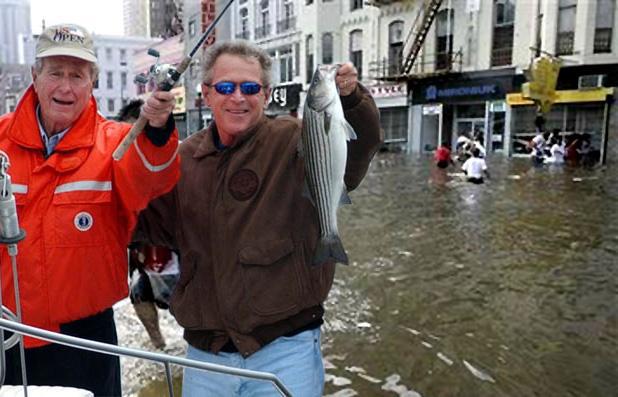
The Absurdity (and Consistency) of White Denial
So when asked if we believed the Katrina tragedy showed that there was a lesson to be learned about racial inequality in America--any lesson at all--while ninety percent of blacks said yes, only thirty-eight percent of whites agreed (18). To us, Katrina said nothing about race whatsoever, even as blacks were disproportionately affected; even as there was a clear racial difference in terms of who was stuck in New Orleans and who was able to escape; even as the media focused incessantly on reports of black violence in the Superdome and Convention Center that proved later to be false; even as blacks have been having a much harder time moving back to New Orleans, thanks to local and federal foot-dragging and the plans of economic elites in the city to destroy homes in the most damaged (black) neighborhoods and convert them to non-residential (or higher rent) uses.
Nothing, absolutely nothing, has to do with race nowadays, in the eyes of white America writ large. But the obvious question is this: if we have never seen racism as a real problem, contemporary to the time in which the charges are being made, and if in all generations past we were obviously wrong to the point of mass delusion in thinking this way, what should lead us to conclude that now, at long last, we've become any more astute at discerning social reality than we were before? Why should we trust our own perceptions or instincts on the matter, when we have run up such an amazingly bad track record as observers of the world in which we live? In every era, black folks said they were the victims of racism and they were right. In every era, whites have said the problem was exaggerated, and we have been wrong.

Labels:
racism
Amos 'n' Andy, Imus, and mascots
Don Imus in 2047: Precedents & Presidents“Imus and Andy”: Don Imus has been known to “mimic” famous African-Americans[1] from Al Sharpton to Vernon Jordan with an over-the-top stereotypical dialect reminiscent of “Amos and Andy” fame (review). Imus grew up in an era where A & A was still an enduring American phenomenon. Amos and Andy was rooted in a long legacy of minstrel show tradition that had whites in blackface; it was a pioneer in radio broadcasting in 1928; its 30+ year run is the longest in radio broadcast history; at its peak in 1930, it spawned a movie and had ONE-THIRD of the nation tuning in on a NIGHTLY basis; and in 1951, with whites-in-blackface no longer socially acceptable, CBS introduced A & A as the first ever all-black cast on network television. The NAACP immediately protested its airing and issued its 7-point bulletin[2]. After A & A won an Emmy award in 1952, the NAACP responded by initiating a boycott of Blatz beer. By April 1953 Blatz withdrew its sponsorship and CBS announced: "The network has bowed to the change in national thinking."[3] At a time when network TV was about as racially diverse as national talk radio is today, such "change" came with a backlash. It would be 20 years before another show with an all-black cast was aired. Defenders pointed to A & A’s witty character-driven scriptwriting as the primary reasons for its popularity. Like the wit of Imus, that entertainment came as part of a “package deal”.
Today, some 40 years after its final TV episodes were removed from syndication in 1966 (1960 for radio), the vast majority of Americans agree that the "Amos and Andy" shows are unfit for radio or television. But at the time, network executives and large masses of white Americans just couldn't understand what all the hubbub was about. Even some African-American fans, saddled with the unenviable choice of an unflattering comedic depiction or no depiction at all, wanted the show to remain on the air. Despite the dialects, stereotypes, and minstrel roots, many who considered themselves fair-minded people, thought that it was just good clean fun. After all, didn’t Abbot and Costello make fun of themselves? What’s the difference? Why is the NAACP meddling with our entertainment anyway? Comment: Needless to say, this argument applies to Indian mascots and other forms of stereotyping. Forty years after the fact, we know recognize that the most virulent Native stereotypes were wrong. But we still defend Chief Wahoo, the Washington Redskins, and the Fighting Sioux. In another 40 years, it'll be obvious just how wrong these stereotypes were too.


Today, some 40 years after its final TV episodes were removed from syndication in 1966 (1960 for radio), the vast majority of Americans agree that the "Amos and Andy" shows are unfit for radio or television. But at the time, network executives and large masses of white Americans just couldn't understand what all the hubbub was about. Even some African-American fans, saddled with the unenviable choice of an unflattering comedic depiction or no depiction at all, wanted the show to remain on the air. Despite the dialects, stereotypes, and minstrel roots, many who considered themselves fair-minded people, thought that it was just good clean fun. After all, didn’t Abbot and Costello make fun of themselves? What’s the difference? Why is the NAACP meddling with our entertainment anyway?


Labels:
racism
Muckleshoots to save Sonics?
Could tribe save the Sonics?Santos pitched his idea to the tribe: Why not build a new arena for the Sonics? The tribe has the land. It has a casino full of money. It runs a summer-concert venue, the White River amphitheater, and could use that operation to book concerts for an arena in the winter.
Muckleshoot leaders such as John Daniels Jr. don't get excited much, Santos says. Or if they do, you'd never know it.
"But his eyes lit up at the thought of the tribe saving the Sonics. They've become very energized about it."
Last week, the tribal council asked its staff to pursue the idea, including putting together a financing plan that would likely propose a sharing of costs among the Sonics, the tribe and the state.
It's far from a done deal. The tribe's chairwoman, Charlotte Williams, confirmed the tribe is interested but cautioned, "The matter has not progressed to the point where any serious discussions have taken place." Muckleshoot to propose moving Sonics to its landThe Muckleshoot Tribe is actively crafting a proposal that could move the Sonics to a new arena on tribe-owned land in Auburn.
The idea has attracted interest since Sonics owner Clay Bennett met with tribal officials in February at former NBA star and Sonics coach Bill Russell's home on Mercer Island, said Bob Santos, the longtime civic and International District activist who arranged the meeting.
The tribal council last week directed its staff to examine a potential partnership with Bennett, and how a new arena would be financed, tribal spokesman Rollin Fatland said. 
Muckleshoot leaders such as John Daniels Jr. don't get excited much, Santos says. Or if they do, you'd never know it.
"But his eyes lit up at the thought of the tribe saving the Sonics. They've become very energized about it."
Last week, the tribal council asked its staff to pursue the idea, including putting together a financing plan that would likely propose a sharing of costs among the Sonics, the tribe and the state.
It's far from a done deal. The tribe's chairwoman, Charlotte Williams, confirmed the tribe is interested but cautioned, "The matter has not progressed to the point where any serious discussions have taken place."
The idea has attracted interest since Sonics owner Clay Bennett met with tribal officials in February at former NBA star and Sonics coach Bill Russell's home on Mercer Island, said Bob Santos, the longtime civic and International District activist who arranged the meeting.
The tribal council last week directed its staff to examine a potential partnership with Bennett, and how a new arena would be financed, tribal spokesman Rollin Fatland said.

Yeagley's new book
Bad Eagle: The Rantings of a Conservative Comanche (Paperback)From this author's perspective, Yeagley's blog predominantly relies upon Yeagley's misperceived impression that he labels American Indian "failure," which probably accounts for his general unpopularity within Indian Country. Yeagley cannot write authentically about people he does not really understand, namely American Indians.
If I were to give my overall assessment of his position, it would be similar to the sinking ship analogy. In Yeagley's world, Indians are supposedly sunken already if not sinking with the ship (his writings about the "failure" of "Indian men" confirms this observation). So, in response to a misperceived Indian `failure,' Yeagley has decided to jump ship and head for the frothy shores of white supremacy, where he abandons the dying concerns of old Indian Country in favor of squatting in the white wing of the shiny city upon a hill. So rather than supporting the struggles of American Indians to write their own histories and correct degrading stereotypes, Yeagley attempts to actually champion those negative stereotypes from the bleached sands of his own perceived white superiority. 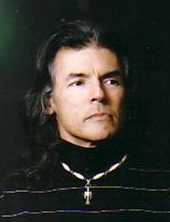
If I were to give my overall assessment of his position, it would be similar to the sinking ship analogy. In Yeagley's world, Indians are supposedly sunken already if not sinking with the ship (his writings about the "failure" of "Indian men" confirms this observation). So, in response to a misperceived Indian `failure,' Yeagley has decided to jump ship and head for the frothy shores of white supremacy, where he abandons the dying concerns of old Indian Country in favor of squatting in the white wing of the shiny city upon a hill. So rather than supporting the struggles of American Indians to write their own histories and correct degrading stereotypes, Yeagley attempts to actually champion those negative stereotypes from the bleached sands of his own perceived white superiority.

Zuni wins coloring contest
Coloring contest winner takes trip
Zuni third-grader is statewide champContinental Divide Electric Cooperative can boast that it has its first ever statewide safety-poster coloring contest winner. The New Mexican Rural Electric Cooperative Association began their annual statewide contest 23 years ago. The competition involves pupils who represent the various New Mexico electric co-ops. Mac Juarez, spokesman for CDEC said, "We couldn't be prouder of this year's winner. She is Nicole Vacit, a third-grader at Dowa Yalanne Elementary School in Zuni."
Vacit, age 9, attended the award ceremony last week. She had a choice to make regarding the prize. The option was between a $2,500 savings bond or an educational tour of Washington with her parents. Although the savings bond would have been nice, patriotism and national pride won the day, and Vacit chose the Washington trip over the money. Vacit was excited about winning the contest and her choice of prize. 
Zuni third-grader is statewide champ
Vacit, age 9, attended the award ceremony last week. She had a choice to make regarding the prize. The option was between a $2,500 savings bond or an educational tour of Washington with her parents. Although the savings bond would have been nice, patriotism and national pride won the day, and Vacit chose the Washington trip over the money. Vacit was excited about winning the contest and her choice of prize.

June 03, 2007
Term paper cites Blue Corn Comics
The right to exist; An issue of discrimination towards Native AmericansThe key problem to this stereotypical outlook in today's society can be traced back to the education system. Children are taught at an early age that Native Americans are a race that runs around in buckskins and feathers and come home to their teepees at night. This is done by teaching them myths about the Natives with songs like Ten Little Indians (which was a song used to teach settler children how to count by counting the dead bodies of the slaughtered Native Americans). Children are then taught to "Sit Indian style" and to act out Thanksgiving plays based on myths and lies. Such groups as the Boy/Girl Scouts, Indian Guides, and Indian Princesses reinforce racist behavior with so called "authentic dances" to Hollywood war drums and then finish the day with building teepee villages.
The example of what these seemingly harmless jokes and games teach our young people can be described simply in a quote of an 8th grader when writing about his school mascot. -- "We simply chose an Indian as the emblem. We could have just as easily chosen any uncivilized animal." -1997
So what harm does having an Indian mascot or teaching your children Ten Little Indians do? As mentioned before it dehumanizes the Native Americans, encouraging racism and creating a hostile environment in school and in the workplace. Many Native American children are forced to go to a school that depicts them as inhuman myths, where they often are plagued with bullying, derogatory remarks, and low self-esteem. My own personal experiences can speak for the Native American children who are often physically and verbally abused by both peers and teachers. And:The media is another large reason why so much prejudice is still in existence. Hollywood in itself has been a driving force behind the misconceptions of American Indians. The most common depiction of Indian women are as sex objects and Indian men as fierce and bloody warriors.
The movie Pocahontas has history completely wrong. Pocahontas was only a child when John Smith came to America and she never saved his life. The Road to El Dorado is even worse. Not only is the heroine of the movie a Native American prostitute but the priest of the culture is depicted as evil. The Spaniards slaughtered thousands of people when the came to the Americas, yet the movie depicts the Spaniards as fun loving heroes. The movie is subtly saying that the Native American culture is evil and the dominant Spanish culture of the time is good.
It could be compared to a movie made on the Jewish Holocaust, where the war camps are holiday vacation resorts and the Nazi's are fun loving heroes who happen to have a Jewish prostitute following them around while an evil Rabbi is trying to make a major power grab.
Since most people get their information from the movies, coupled with the fact that history books either sugar coat the events, skip over them, or make flat out lies, people spend the rest of their lives believing the lies as truths. Comment: Would a student have written a paper like this when I was in school? Not likely.
Glad to know youngsters are benefiting from the accumulated facts and evidence on my website. They're the ones who will change the world.
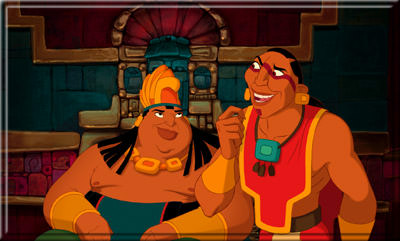
The example of what these seemingly harmless jokes and games teach our young people can be described simply in a quote of an 8th grader when writing about his school mascot. -- "We simply chose an Indian as the emblem. We could have just as easily chosen any uncivilized animal." -1997
So what harm does having an Indian mascot or teaching your children Ten Little Indians do? As mentioned before it dehumanizes the Native Americans, encouraging racism and creating a hostile environment in school and in the workplace. Many Native American children are forced to go to a school that depicts them as inhuman myths, where they often are plagued with bullying, derogatory remarks, and low self-esteem. My own personal experiences can speak for the Native American children who are often physically and verbally abused by both peers and teachers.
The movie Pocahontas has history completely wrong. Pocahontas was only a child when John Smith came to America and she never saved his life. The Road to El Dorado is even worse. Not only is the heroine of the movie a Native American prostitute but the priest of the culture is depicted as evil. The Spaniards slaughtered thousands of people when the came to the Americas, yet the movie depicts the Spaniards as fun loving heroes. The movie is subtly saying that the Native American culture is evil and the dominant Spanish culture of the time is good.
It could be compared to a movie made on the Jewish Holocaust, where the war camps are holiday vacation resorts and the Nazi's are fun loving heroes who happen to have a Jewish prostitute following them around while an evil Rabbi is trying to make a major power grab.
Since most people get their information from the movies, coupled with the fact that history books either sugar coat the events, skip over them, or make flat out lies, people spend the rest of their lives believing the lies as truths.
Glad to know youngsters are benefiting from the accumulated facts and evidence on my website. They're the ones who will change the world.

Labels:
comic books
More on trademarking Katonah
Chief Katonah’s Descendants Oppose StewartLast week, Mr. Burton and other Indian descendants of Chief Katonah joined “Nobody Owns Katonah,” a campaign organized by the Katonah Village Improvement Society against the patent request. The society formally filed its opposition to the patent request in late April; Martha Stewart Living Omnimedia has since filed a motion seeking the dismissal of the opposition.
Mr. Burton said that he had no problem with the company using the name Katonah for a product line, which it already does—the line is sold at Macy’s—just as he had no problem with the town’s use of the name.
“But she wants to trademark it, and that’s a whole different ball of wax,” Mr. Burton said. “Trademark Ronald Reagan, Jimmy Carter or Prince of Wales instead.” 
Mr. Burton said that he had no problem with the company using the name Katonah for a product line, which it already does—the line is sold at Macy’s—just as he had no problem with the town’s use of the name.
“But she wants to trademark it, and that’s a whole different ball of wax,” Mr. Burton said. “Trademark Ronald Reagan, Jimmy Carter or Prince of Wales instead.”

Navajos in old Westerns
Utah's movie career still going strong after 85 yearsKanab--and Utah--got its big break when in 1939 John Ford made "Stagecoach," starring John Wayne, in Monument Valley. After that, he and many other directors returned to Utah many times.
Of course, Kanab's citizens profited. Locals happily jumped for the opportunity to work as extras, contribute livestock, provide meals and transportation, and help build roads. Many Navajos were willing to work as “savage Indians.” The income that acting provided became important to many Navajos. In 1946, when Kanab's movie business was languishing somewhat, 65 tribe members sent a petition, signed with thumb prints, to Hollywood asking for more work. 
Of course, Kanab's citizens profited. Locals happily jumped for the opportunity to work as extras, contribute livestock, provide meals and transportation, and help build roads. Many Navajos were willing to work as “savage Indians.” The income that acting provided became important to many Navajos. In 1946, when Kanab's movie business was languishing somewhat, 65 tribe members sent a petition, signed with thumb prints, to Hollywood asking for more work.

June 02, 2007
Native writers gather in Arizona
Native Voices symposium a three-day gathering
Indian authors will focus on language, poetryThe three-day gathering—running concurrently with the month-long institute—will feature lectures and workshop sessions led by prominent Indian poets and writers from across the continental United States and beyond.
Wordsmiths slated to participate include Diné (Navajo) writer Sherwin Bitsui, a Tucson resident whose poetry recently earned him a $40,000 prize from the 2006 Whiting Writers' Awards, and Tlingit linguist Nora Marks Dauenhauer of Alaska.
Frances Sjoberg, literary director for the poetry center, said a symposium like this has been an idea two years in the making.
"We started out with five writers in mind and eventually ended up with 11," she said. "Here in Southern Arizona we have such a rich community of indigenous writers. We tried to create a mix of poets. Some write in indigenous languages like Rex Lee Jim. We have poets who incorporate their own language into English and we have diversity in both theme and tribal affiliation. It was hard to choose. There are so many incredible native writers."
Indian authors will focus on language, poetry
Wordsmiths slated to participate include Diné (Navajo) writer Sherwin Bitsui, a Tucson resident whose poetry recently earned him a $40,000 prize from the 2006 Whiting Writers' Awards, and Tlingit linguist Nora Marks Dauenhauer of Alaska.
Frances Sjoberg, literary director for the poetry center, said a symposium like this has been an idea two years in the making.
"We started out with five writers in mind and eventually ended up with 11," she said. "Here in Southern Arizona we have such a rich community of indigenous writers. We tried to create a mix of poets. Some write in indigenous languages like Rex Lee Jim. We have poets who incorporate their own language into English and we have diversity in both theme and tribal affiliation. It was hard to choose. There are so many incredible native writers."
Aztecs dance again
Aztecs new to American Indian Festival in ChesapeakeNew this year will be an appearance from the Nahui Ollin (means "four elements" ) Aztec Dancers, a troupe based in Arizona and Pennsylvania. Composed of about 50 members of the Salinas family from Mexico City, the company is famous for its re-creations of pre-Hispanic (or pre-Colombian) Indian dances that date back more than 600 years to when Aztecs ruled Mexico with mighty stone cities and a complex culture that included mathematics, engineering and astronomy.
"As a child living in Mexico City, we would perform these dances every weekend to teach our culture and show where we came from," Salinas said from the troupe's Arizona headquarters. "These dances are passed from generation to generation to generation. Now we share our culture and our advances with Indians up north. We now go to different pow-wows throughout the country to explain our dances, our regalia, our culture." 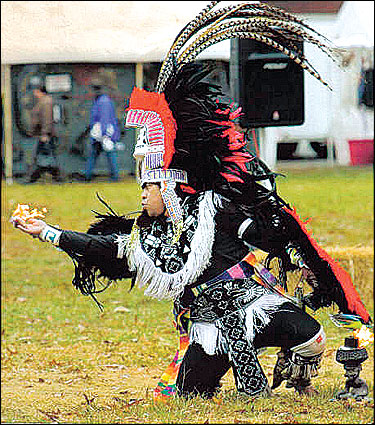
"As a child living in Mexico City, we would perform these dances every weekend to teach our culture and show where we came from," Salinas said from the troupe's Arizona headquarters. "These dances are passed from generation to generation to generation. Now we share our culture and our advances with Indians up north. We now go to different pow-wows throughout the country to explain our dances, our regalia, our culture."

Aboriginals plan protests
Indian Summer
With a national day of protest slated for June 29, native groups across Canada are weighing the merits of action over negotiationBy Terry Nelson's calculations, Canada's security forces don't stand a chance if the summer turns hot and nasty.
The native leader figures that in Winnipeg, the car theft capital of Canada, there's no shortage of abandoned vehicles to set alight across train tracks that haul resources to the United States.
"There's 30,000 miles of railway lines in this country and more than 50,000 miles of (oil and gas) pipelines," says Nelson, chief of the Anishinabe First Nation, south of Winnipeg.
"The reality is that there's no army that can actually protect all of that. Not the United States army, not the Canadian army, not any."
With a national day of protest slated for June 29, native groups across Canada are weighing the merits of action over negotiation
The native leader figures that in Winnipeg, the car theft capital of Canada, there's no shortage of abandoned vehicles to set alight across train tracks that haul resources to the United States.
"There's 30,000 miles of railway lines in this country and more than 50,000 miles of (oil and gas) pipelines," says Nelson, chief of the Anishinabe First Nation, south of Winnipeg.
"The reality is that there's no army that can actually protect all of that. Not the United States army, not the Canadian army, not any."
"The world will destroy itself"
Amazon tribesman takes rainforest message to JapanAn Amazon tribal leader warned Thursday that the world will "destroy itself" unless nations stop clearing rainforests and voiced anger that his message is falling on deaf ears.
Taking his campaign to the world's second-largest economy, Raoni Metyktire, a leader of the Kayapo Indians in Brazil, said Amazon nature was falling victim to development, mining and farming.
"I have met with presidents, provincial leaders and other officials. But they do not listen to what I say," he said through a translator.
Taking his campaign to the world's second-largest economy, Raoni Metyktire, a leader of the Kayapo Indians in Brazil, said Amazon nature was falling victim to development, mining and farming.
"I have met with presidents, provincial leaders and other officials. But they do not listen to what I say," he said through a translator.
June 01, 2007
Alexie riffs on Flight
Revising Sherman AlexieDave: In many of your books, there's an orphan or a character missing a parent. The child is missing too many pieces to form a complete or satisfying self-image.
Alexie: Well, that's a constant theme of any colonial literature. That's what I write.
Dave: How so in relation to colonial literature?
Alexie: Displacement. The killing of your birth father and the substitution of an adopted father. Think of your birth parent being your original culture and your adopted parent being the colonizing culture. In a sense, Native Americans, anybody who's been colonized, they're in the position of an orphan. And:Dave: How have reservations and reservation life changed since you grew up on one?
Alexie: One of things we forget as natives and non-natives is that reservations were created as concentration camps. They were created so Indians would be shipped there and die. I really think that's still their purpose: to kill.
What has changed? Casinos have changed them. Not all of them, but a lot of them. So there's more money, more jobs, but there's still a distinct lack of education; there are still the same social problems. The joke is, Instead of Chevys up on blocks in the yard, it's Lexuses on blocks in the yard. The amount of money flowing through any particular tribe has increased, but the social problems persist. They may not be as poor materially, but they're poor spiritually. 
Alexie: Well, that's a constant theme of any colonial literature. That's what I write.
Dave: How so in relation to colonial literature?
Alexie: Displacement. The killing of your birth father and the substitution of an adopted father. Think of your birth parent being your original culture and your adopted parent being the colonizing culture. In a sense, Native Americans, anybody who's been colonized, they're in the position of an orphan.
Alexie: One of things we forget as natives and non-natives is that reservations were created as concentration camps. They were created so Indians would be shipped there and die. I really think that's still their purpose: to kill.
What has changed? Casinos have changed them. Not all of them, but a lot of them. So there's more money, more jobs, but there's still a distinct lack of education; there are still the same social problems. The joke is, Instead of Chevys up on blocks in the yard, it's Lexuses on blocks in the yard. The amount of money flowing through any particular tribe has increased, but the social problems persist. They may not be as poor materially, but they're poor spiritually.

Labels:
literature
"Gay Eskimo" song banned
'Gay Eskimo' song lyrics stir controversy at Inuvik schoolStaff at the high school in Inuvik, N.W.T., banned a student from performing a comedic song about a lonely "gay Eskimo" at a recent school fundraiser, claiming that the lyrics are culturally insensitive.
Crystal Saunders wanted to sing the song "Eskimo" with some friends at a fundraiser last week at Samuel Hearne Secondary School. Staff there turned down her request to perform the song on the basis that the word "Eskimo" might be considered offensive—a point that Saunders, who is Inuvialuit, disagrees with.
"It shouldn't be," she told CBC News. "[For] some people it would be, but those people might need to build up a little bit more humour and take it easy."
The song, which is attributed to the Canadian comedy group Corky and the Juice Pigs from its 1993 debut album, includes the lyrics: "I go out seal hunting with my best friend Tarka, but all I want to do is get into his parka. I'm the only gay Eskimo in my tribe."
The song also includes the lines: "These cold winter nights are taking their toll, I even get excited when I see the North Pole. I'm the only gay Eskimo ... I'm the only one I know."
Vice-principal Lorne Guy said Inuvialuit elders have told him using the word "Eskimo" is unacceptable, adding that the song's references to homosexuality may also have played a part in the school's decision. 
Crystal Saunders wanted to sing the song "Eskimo" with some friends at a fundraiser last week at Samuel Hearne Secondary School. Staff there turned down her request to perform the song on the basis that the word "Eskimo" might be considered offensive—a point that Saunders, who is Inuvialuit, disagrees with.
"It shouldn't be," she told CBC News. "[For] some people it would be, but those people might need to build up a little bit more humour and take it easy."
The song, which is attributed to the Canadian comedy group Corky and the Juice Pigs from its 1993 debut album, includes the lyrics: "I go out seal hunting with my best friend Tarka, but all I want to do is get into his parka. I'm the only gay Eskimo in my tribe."
The song also includes the lines: "These cold winter nights are taking their toll, I even get excited when I see the North Pole. I'm the only gay Eskimo ... I'm the only one I know."
Vice-principal Lorne Guy said Inuvialuit elders have told him using the word "Eskimo" is unacceptable, adding that the song's references to homosexuality may also have played a part in the school's decision.

Labels:
music
NY Times reviews Ten Canoes
Ancient Aboriginal Tales, Parallel Across Epochs“Ten Canoes,” the 10th feature by Mr. de Heer, a Dutch-born Australian filmmaker, is a close collaboration between him and the Ramingining Aboriginal people, many of whom appear in the movie. The first feature made in an Australian indigenous language (there are several different dialects), it swept the 2006 Australian Academy Awards. For the director it was the next logical step into ethnographic territory after his 2002 film, “The Tracker.” In its immersion in a primitive culture, it recalls Zacharias Kunuk’s comparably impressive 2002 film, “Atanarjuat” (“The Fast Runner”), the first Canadian Inuit feature.
The Storyteller, portrayed by the veteran Aborigine actor David Gulpilil Ridjimiraril Dalaithngu (“Walkabout,” “The Last Wave” and “Rabbit-Proof Fence,” billed simply as David Gulpilil), is the only character who speaks English. Almost everyone else in the 90-minute film, set in the Arnhem Land in Australia’s Northern Territory, east of Darwin, speaks the Ganalbingu language, which is translated into colloquial, occasionally racy subtitles.
Once you become accustomed to the mystical vocabulary describing a world without modern science and technology, it amounts to using different terms to describe universal experience. Both the Storyteller’s tale and the movie that contains it transport you out of time and leave you wondering if sorcery, religion and psychotherapy are different forms of magic. Comment: See also Canoes Is More Than Just an 'Important' Movie.

The Storyteller, portrayed by the veteran Aborigine actor David Gulpilil Ridjimiraril Dalaithngu (“Walkabout,” “The Last Wave” and “Rabbit-Proof Fence,” billed simply as David Gulpilil), is the only character who speaks English. Almost everyone else in the 90-minute film, set in the Arnhem Land in Australia’s Northern Territory, east of Darwin, speaks the Ganalbingu language, which is translated into colloquial, occasionally racy subtitles.
Once you become accustomed to the mystical vocabulary describing a world without modern science and technology, it amounts to using different terms to describe universal experience. Both the Storyteller’s tale and the movie that contains it transport you out of time and leave you wondering if sorcery, religion and psychotherapy are different forms of magic.

Labels:
movies
Documentaries highlight dastardly deeds
Go Native
Derek Adams on a season of films highlighting the plight and history of the first people of the AmericasRobin Davey and Yellow Thunder Woman’s ‘The Canary Effect’ is only an hour long, but in that short time it manages to illustrate the past and present plight of the North American Indian with amazing style, verve, wit and intelligence. In fact, were the filmmakers to add 20 minutes to its running time I’d be surprised, staggered even, if it isn’t picked up by a distributor for a theatrical release. Exec-produced by former Eurythmics star Dave Stewart, ‘The Canary Effect’ uses racially derogatory cartoons from the ’40s and ’50s, harrowing montages of past tribal massacres (including an emotional split-screen scene of enforced migration cleverly melded to Lennon’s ‘Working Class Hero’) and snappy visual effects to illustrate interviews with various politically-astute talking heads, including eloquent activist Ward Churchill.
While nowhere near as slick a production, Chip Richie’s dramatised documentary, ‘Trail of Tears: Cherokee Legacy’, deals with another great American injustice: the forced removal of the Oklahoman Cherokees in 1838. True, it’s simplistic and very TV-like, but it’s a fair attempt at getting this tragic story across.

Derek Adams on a season of films highlighting the plight and history of the first people of the Americas
While nowhere near as slick a production, Chip Richie’s dramatised documentary, ‘Trail of Tears: Cherokee Legacy’, deals with another great American injustice: the forced removal of the Oklahoman Cherokees in 1838. True, it’s simplistic and very TV-like, but it’s a fair attempt at getting this tragic story across.

Origin of the hoop dance
History of the modern Hoop Dance
By Dennis ZotighMany tribes lay claim to the Hoop Dance. It wasn't until the 1930s that a young man named Tony White Cloud, Jemez Pueblo, played an instrumental role in its evolution and began using multiple hoops in a stylized version as "founder of the modern Hoop Dance."
He used five hoops made of willow wood bent to form a circle. These hoops were approximately 24 inches in diameter, enough to get his small frame through. Through this new art form, he invented hoop formations to symbolize traditional designs and teachings that were a part of his culture and traditional pueblo upbringing. The hoop designs that White Cloud invented are still the foundation of hoop formations and routines in modern Hoop dancing. American Indians saw his modern multiple Hoop dances in his performances in the 1930s in the American Indian Exposition in Anadarko, Okla., the Gallup Indian Ceremonial in New Mexico and Chicago's Railroad Fair, and adapted it in their own Indian dance shows for the public.
White Cloud made a cameo performance of his Hoop Dance to the American public in the 1942 movie "Valley of the Sun," starring Lucille Ball. During World War II, White Cloud traveled with Gene Autry across America and Europe promoting war bonds to fund the war effort by performing the Hoop Dance. He later danced in Autry's movie, "Apache Country," in 1952.
By Dennis Zotigh
He used five hoops made of willow wood bent to form a circle. These hoops were approximately 24 inches in diameter, enough to get his small frame through. Through this new art form, he invented hoop formations to symbolize traditional designs and teachings that were a part of his culture and traditional pueblo upbringing. The hoop designs that White Cloud invented are still the foundation of hoop formations and routines in modern Hoop dancing. American Indians saw his modern multiple Hoop dances in his performances in the 1930s in the American Indian Exposition in Anadarko, Okla., the Gallup Indian Ceremonial in New Mexico and Chicago's Railroad Fair, and adapted it in their own Indian dance shows for the public.
White Cloud made a cameo performance of his Hoop Dance to the American public in the 1942 movie "Valley of the Sun," starring Lucille Ball. During World War II, White Cloud traveled with Gene Autry across America and Europe promoting war bonds to fund the war effort by performing the Hoop Dance. He later danced in Autry's movie, "Apache Country," in 1952.
Charging for tribal airspace
Manitoba chiefs want cellphone revenueManitoba First Nations are seeking compensation from Manitoba Telecom Services for every cellphone signal that passes through First Nations land, saying the airspace should be considered a resource like land and water.
At a recent economic development summit, the Assembly of Manitoba Chiefs resolved to negotiate revenue sharing with MTS for transmissions signals that cross the land, water and air space of their reserves and traditional territories.
"[The request is] based on the understanding that we do have some fundamental rights as indigenous people to land, water and airspace," said Chief Ovide Mercredi of the Grand Rapids First Nation.
"When it comes to using airspace, it's like using our water and simply because there's no precedent doesn't mean that it's not the right thing to do," he said.
At a recent economic development summit, the Assembly of Manitoba Chiefs resolved to negotiate revenue sharing with MTS for transmissions signals that cross the land, water and air space of their reserves and traditional territories.
"[The request is] based on the understanding that we do have some fundamental rights as indigenous people to land, water and airspace," said Chief Ovide Mercredi of the Grand Rapids First Nation.
"When it comes to using airspace, it's like using our water and simply because there's no precedent doesn't mean that it's not the right thing to do," he said.
Labels:
business,
sovereignty
Subscribe to:
Posts (Atom)


